Your App Is Good And You Should Feel Good
By William Van Hecke. Version 1.1.3.
This is a talk that I developed for CocoaLove, a new conference in Philadelphia that’s “about people, not tech”. This web version has all of the annotations and references and none of the “uhhh”! You can also watch the video version if you prefer. I strongly recommend checking out each of the other talks from that conference; they all fit together in a sympathetic web of thoughtfulness.
I researched this stuff for five months, and ended up using about 25% of the notes and references I collected. So I’d love to talk more with you about anything in here that seems interesting. Thanks!
Special thanks to Laura Savino for surviving the initial junk-heap version of the talk, and to all the dear friends whose conversation helped shape it, especially Nikki Lee, Leah Miller, and Jon Bell.
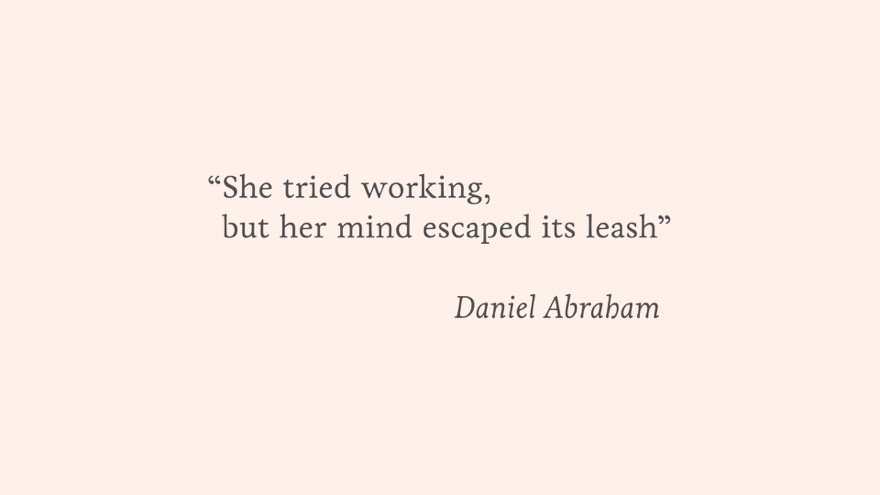
I like putting a quotation up as my first slide, to make sure the presentation is working before jumping into the dramatic introduction!
You should check out Daniel Abraham! He writes fantasy heavy on social and economic themes, full of diverse characters with painfully realistic motivations.
You should also read Nicola Griffith, which has nothing to do with anything but I just love recommending books. As you’ll see.

This talk is called Your App Is Good And You Should Feel Good. If that doesn’t make sense just yet, it will soon.
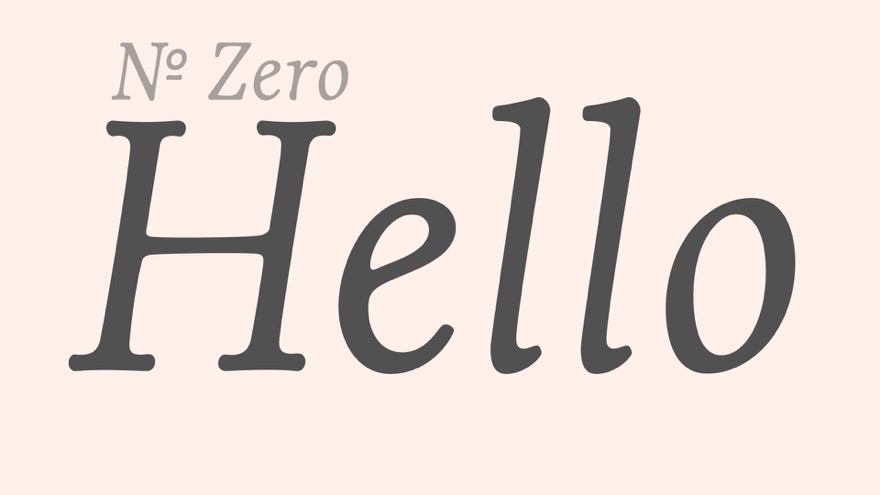
I’d like to get started by letting you know where I am coming from.

I’m a designer. I design apps all day at Omni; I teach classes on design; I wrote a book on design; this is where my brain is all day. Everything is a design challenge to me.

My definition of design is deciding how a thing should be. This is something we all do. If you’ve ever organized utensils in a drawer, arranged furniture in a room, or told someone how to get from one side of town to the other, you were doing design.

But design doesn’t just spring forth fully-formed from a designer’s head, like Athena from the head of Zeus. (By the way, did you know she sprung forth not just fully-formed, but fully armed? She’s got her spear and her shield… she’s ready to rock. I did not know this.)
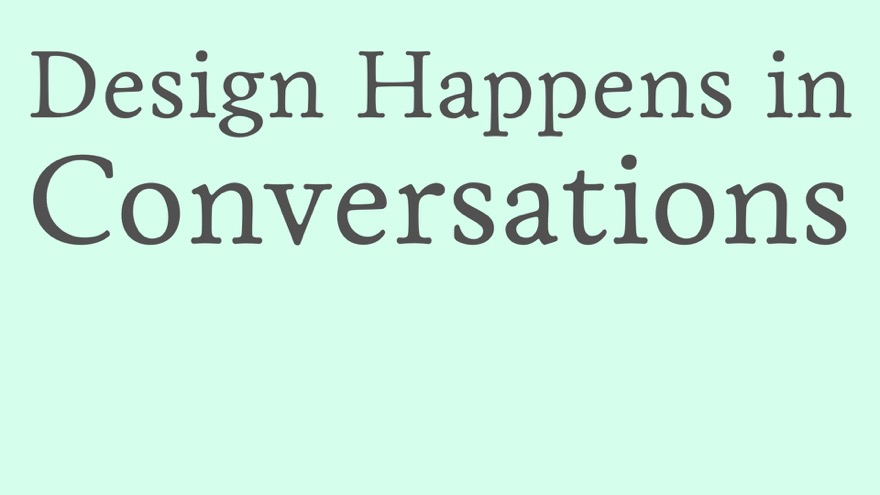
Anyway that’s not how design works. A profound-seeming thing I like to say is that design happens in conversations. Almost every bit of design you see in a product is the result of some sort of conversation.
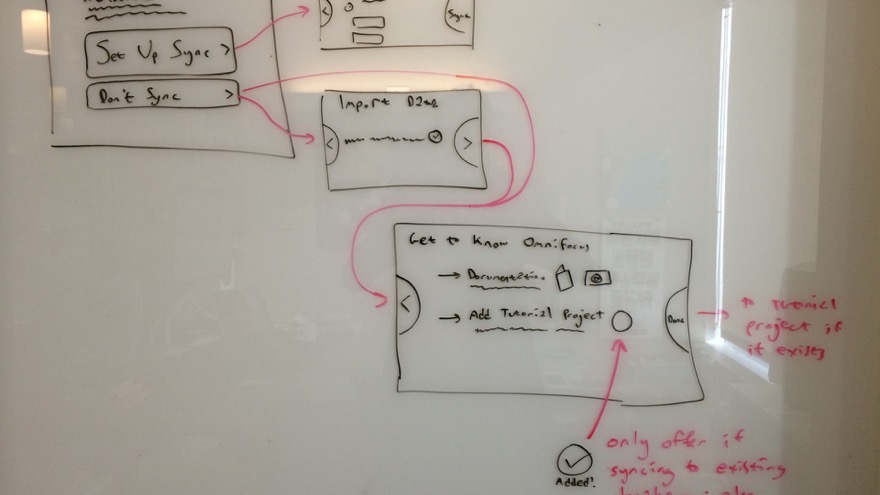
Even when you’re on your own, you sketch. This is a way to have a little conversation with yourself, putting ideas out there and seeing how you react to them as an audience. I think sketching is the central activity of design. And no matter what kind of work you do, if you make software you probably sketch in some form or another. You scribble on a whiteboard, make lists, sketch things out in code. In this broad sense we’re all designers, whether it’s in our job descriptions or not. We all make things and eventually put them out in the world.
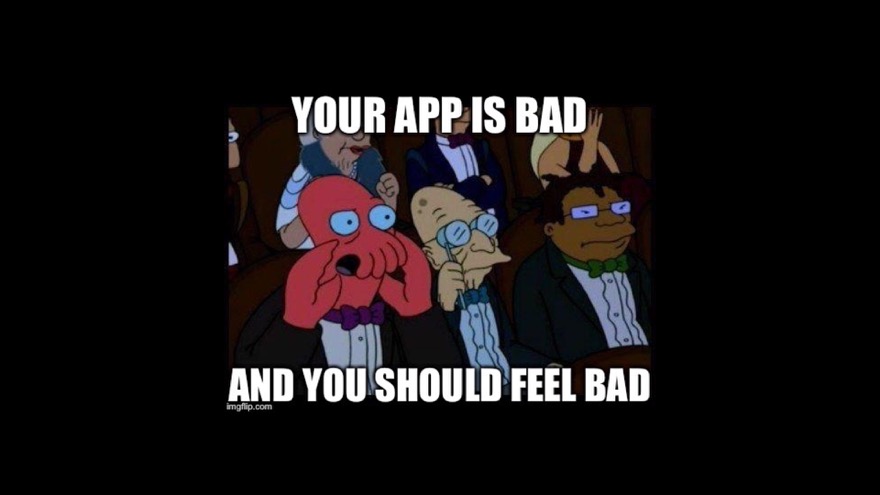
Soooo… here’s an old Futurama meme. To me this kind of represents what it feels like to make things and put them out in the world. Zoidberg here, who just a moment ago was encouraging Fry to play some music on stage, shouts out from the audience, “Your music’s bad and you should feel bad!” This became a very exploitable meme, and people have been using it for years to register their disappointment with other people’s work online.
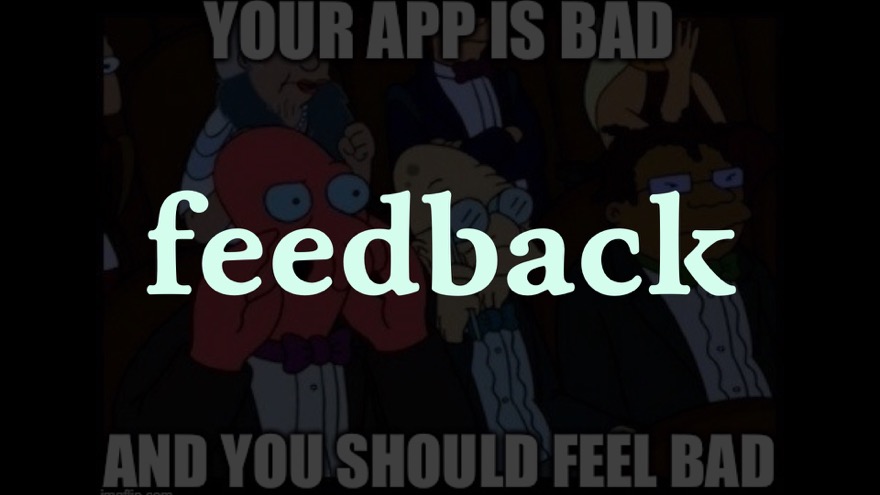
This is a type of feedback, to be sure. Negative feedback, to be specific. Someone out there is telling you that they didn’t like the thing you made.
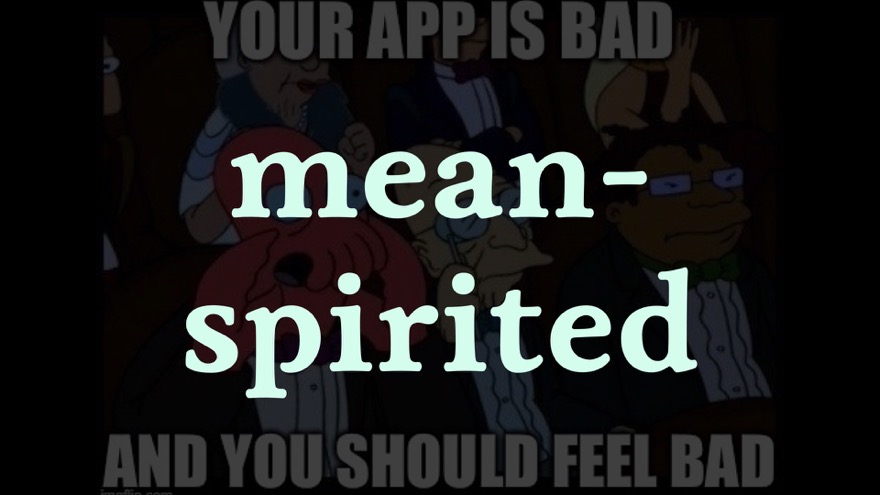
This kind of feedback can feel mean.
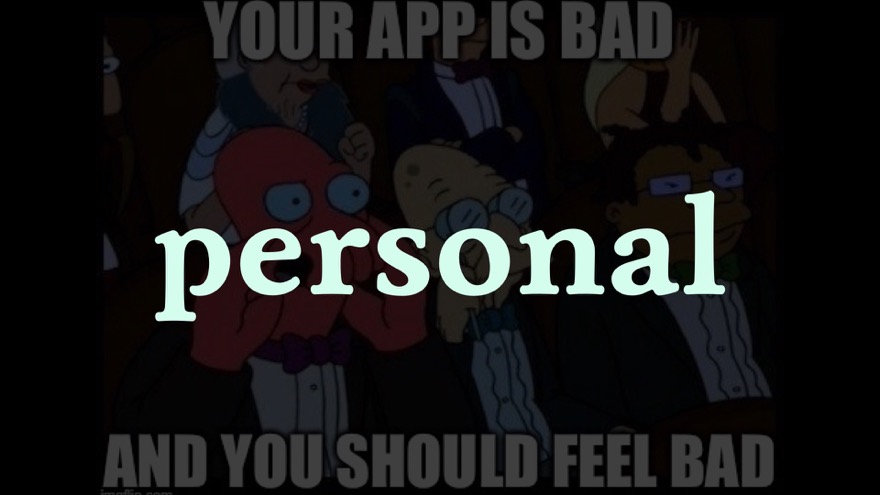
It can feel personal, too. It’s not enough to tell you that they didn’t like it; they want you to feel bad about it. Like there won’t be justice in the world until you suffer for what you did.
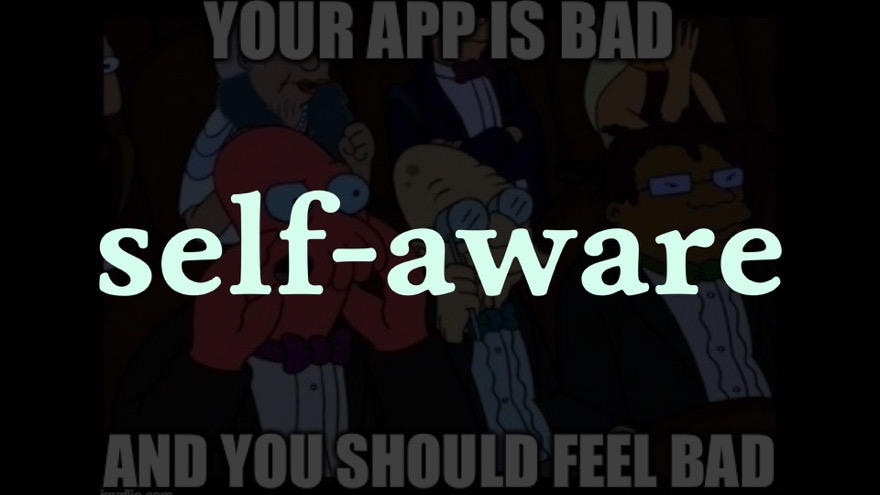
And weirdly, this kind of feedback is self-aware. They know their feedback is mean and personal, and they want you to hear it all the same. It has that nihilistic internetty vibe that seems to say, “Hey, it’s just the internet, don’t take it so seriously.” Which makes you feel like maybe it’s your own fault for not having a thicker skin.

I want us to keep moving toward an environment where such a thick skin isn’t a requirement. But for now, the world we work in is set up to make you feel this way much of the time. So on balance you are gonna need reminders to feel good more often than you need reminders to feel bad. We’ve got to take care of ourselves, and of each other.

I get a lot of comfort from understanding the science involved. I want to talk about these conversations we have in terms of cognitive science. When we study the brain we can understand what it does well and what it does poorly, so we can see the world in a calmer, clearer way.
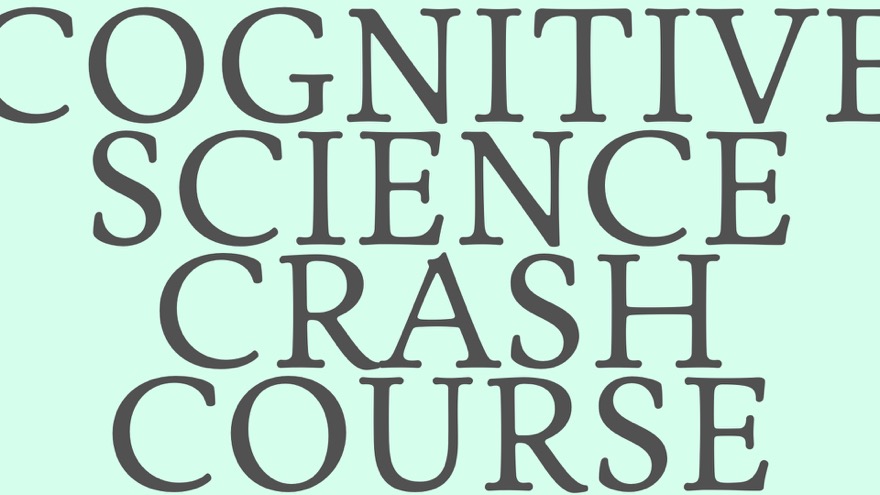
OK HERE WE GO
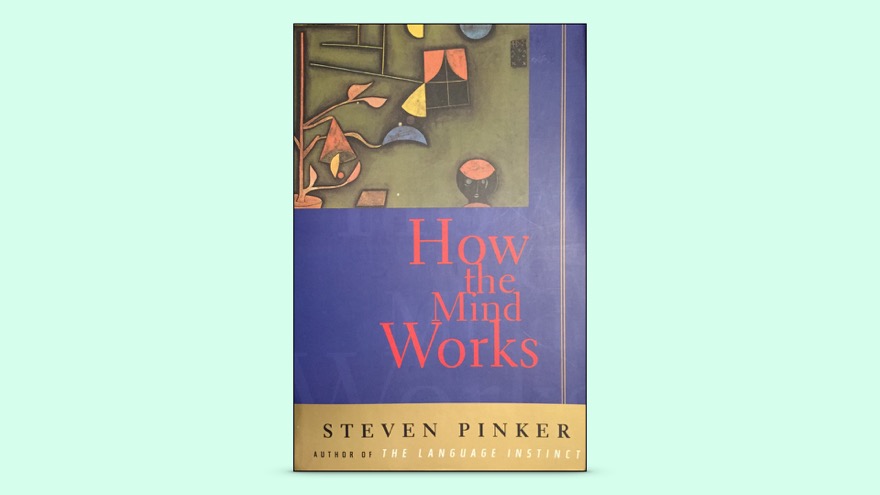
Here is my 90s-tastic copy of How the Mind Works by Steven Pinker. This book introduced me to the concept that our brains are computational equipment, evolved over millions of years. I mean of course they are, but I’d never really thought about what that implies.

This is also an example of why I love used books. This copy came with some previous owner’s lovely drawing in it, when I bought it at Half Price Books in Seattle.
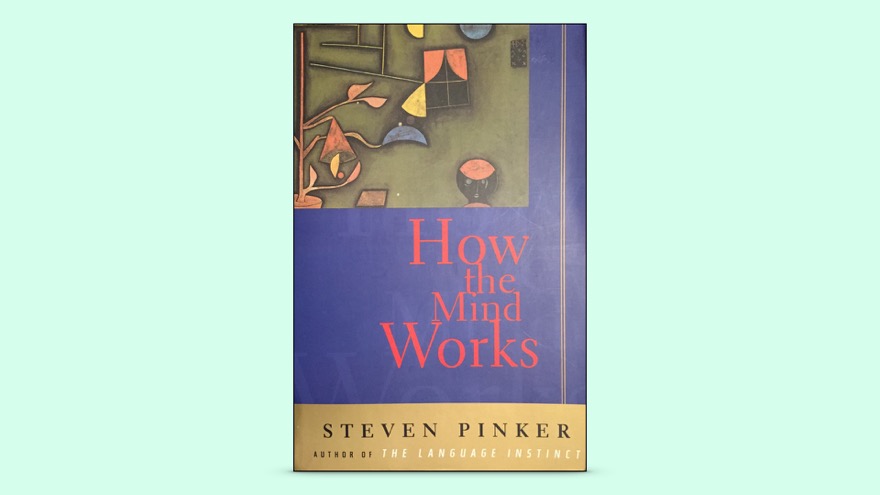
Anyway, it makes sense that if your brain is a complex piece of computing equipment — and in fact it’s the most complex system we’ve ever encountered in the entire universe — then it must be subject to the same sort of faults you might expect in any complex system.
I strongly recommend everything Pinker has written, by the way. I wish I could have fit it all into this talk!
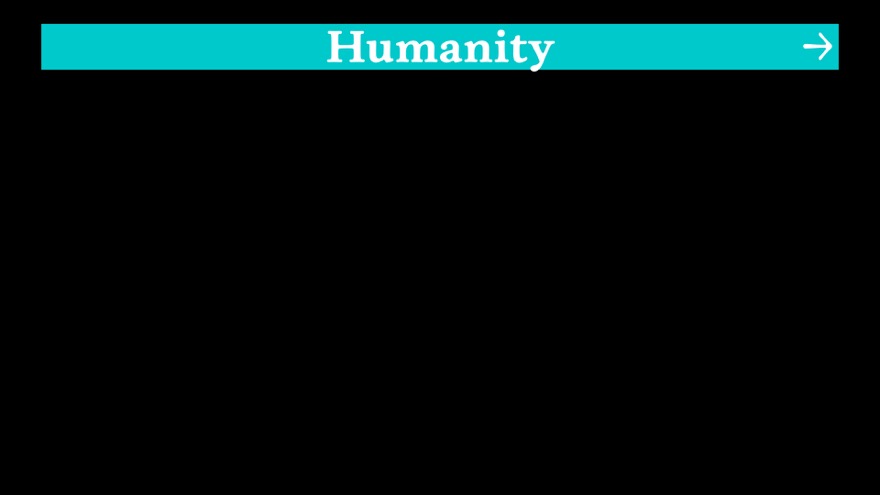
Here’s a little timeline of our history. It starts at our common ancestor with chimps, somewhere around 6 million years ago, on the left, to the present day on the right.
Most of this timeline is adapted from The Righteous Mind by Jonathan Haidt.
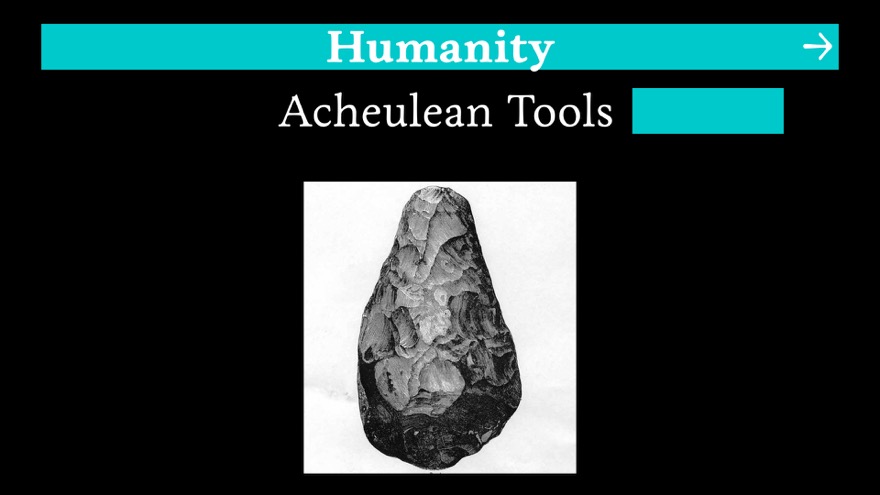
About 1.8 million years ago, we developed the Acheulean toolkit. Tools like this “axe” were the extent of human technology for most of our existence! This thing was the height of technology on the planet for millions of years.
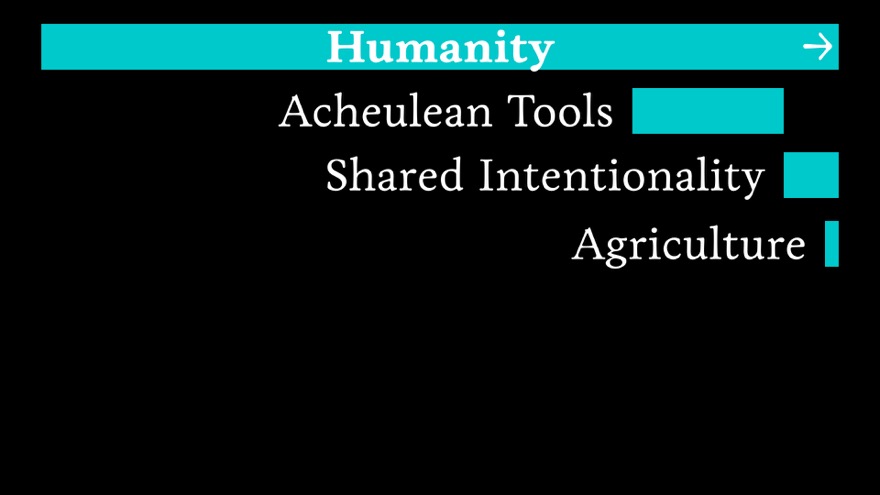
Then about 600,000 years ago, we got more cooperative. We became social, hunted together with spears, and cooked our food together on hearths. About 10,000 years ago, we finally learned to grow our own food.

Eventually that led to city-states, about 7,000 years ago, which were the first congregations of lots of people in one place, having to figure out how to get along together.
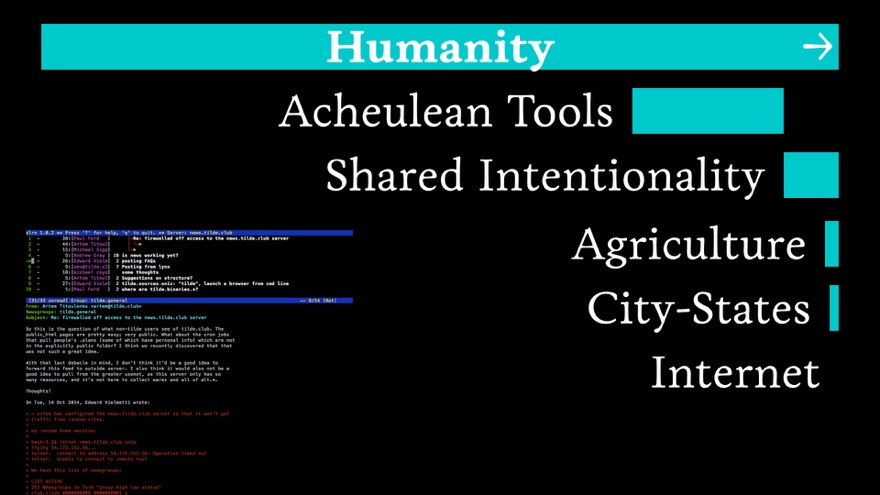
And then, we gained the ability to converse with strangers anywhere on the planet, in real time, all day long, with no consequences, in… uh… 1980. We have had barely a generation since this became a thing we need to deal with — you can’t see the bar, there, because it’s just .005 pixels wide. These time scales are going to be useful to keep in mind.
Usenet! Yay!

Here’s our next book — The Village Effect by Susan Pinker. Actually the sister of Steven Pinker, whose book we just saw! They’re this super-smart sibling duo of psychology.

This is 150 dots. There’s a concept called Dunbar’s Number, somewhere around 150, which is the number of people we can maintain relationships with while still seeing them as individual humans. You see this number everywhere in anthropology, from the max size of hunter-gatherer bands, to the size of a country village, to the number of people we tend to send holiday cards to. This is the social scale our brains are set up to deal with.

Whereas this is more like the number of people I’m likely to interact with online in the course of a week. This discrepancy is worth keeping in mind too.
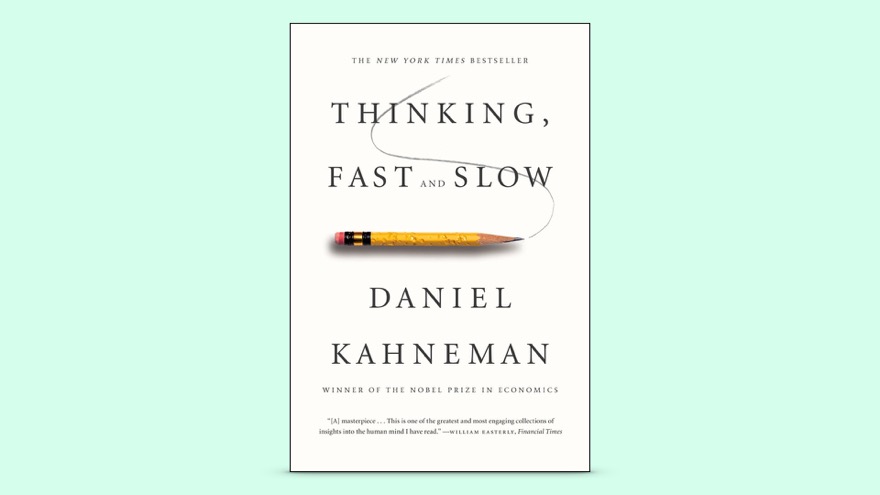
Next book! Thinking, Fast and Slow by Daniel Kahneman. There’s this thing called the Hawking index, which uses popular Kindle highlights to calculate how far into a book people tend to get. This book famously has a Hawking index of 6.8%. People bounce off of this book right away. But it’s really good! Please do at least start it, and even if you only get 6.8% of the way in, it’ll be worth it.
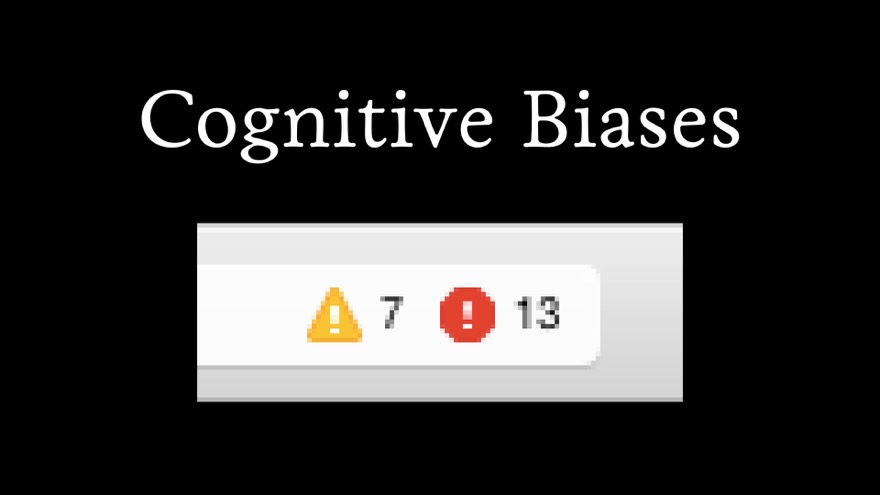
This book describes cognitive biases, which are essentially bugs in our brains; the result of running an OS that can only be upgraded in evolutionary time, and can never, ever be refactored. You may have heard of confirmation bias, negativity bias, probability neglect, anchoring, and so on. There are tons of them. These assumptions and shortcuts probably served us well for several million years, helping us make quick decisions to survive on the savannah. But now they cause us a lot of trouble. I’ll be pointing out some of these biases as we go.
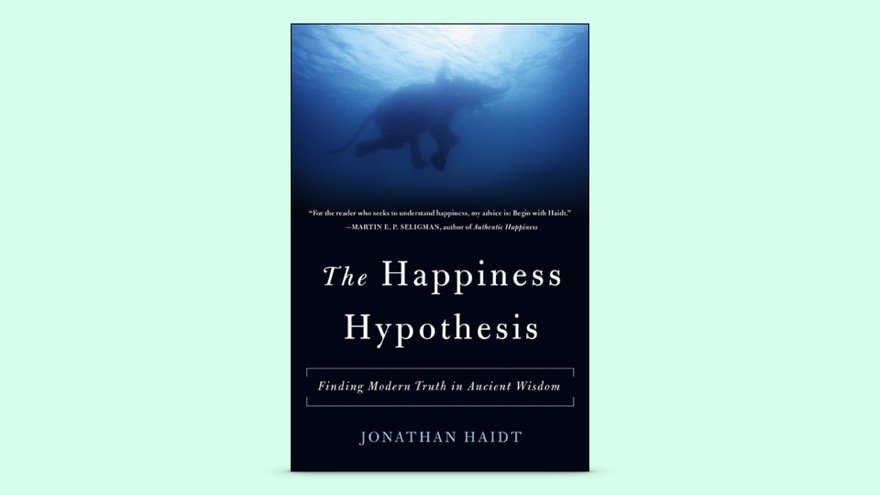
Another book! The Happiness Hypothesis by Jonathan Haidt introduced a key metaphor.
Your mind is like an elephant, with a person riding on top.
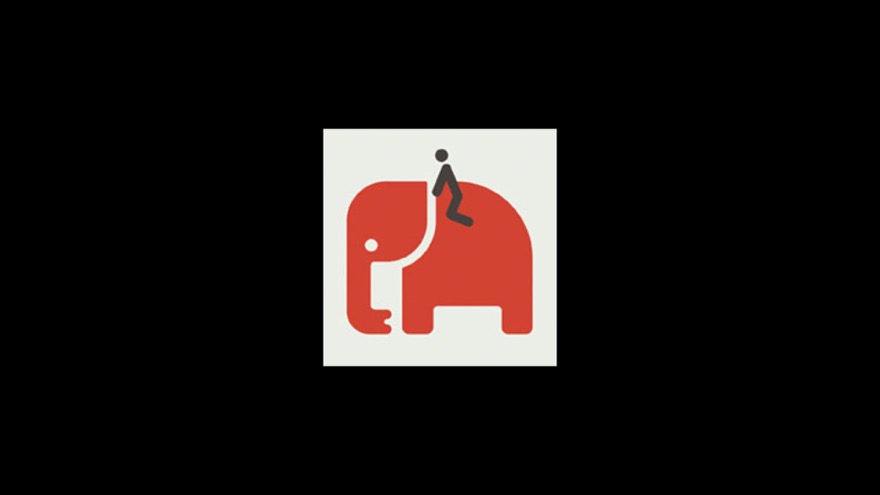
Your unconscious brain is huge. It’s this giant lumbering beast, evolved to make snap judgments based on primitive biases and to go wherever it wants to go. Your consciousness — the new, intentional, planning-ahead part of your brain — is this tiny person on top who thinks they’re the one actually in charge. You can gradually influence your elephant with consistent finesse and training, but you can’t really force it to do anything for long.
This charming illustration is from the Mindapples book The Elephant and the Rider. One way to train your elephant is with Cognitive Behavioral Therapy, which turned out to be a running theme at CocoaLove.
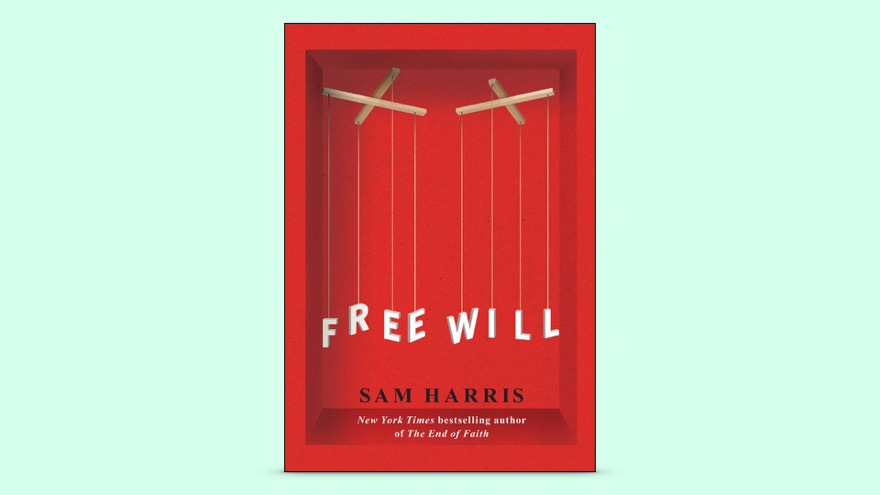
Aren’t we actually in control? Aren’t we the authors of our own thoughts and actions? This book, Free Will by Sam Harris, makes a pretty strong argument. The argument is…

“Nope.” More and more research is suggesting that not only are we heavily influenced by our subconscious, we might be totally enslaved by it. Several studies have shown that via fMRI and EEG, an intention can be seen in your brain several hundred milliseconds before you think you’ve decided. This is terrifying! If you work with software you know how long a response time of several hundred milliseconds can feel!

Now, there’s one more enduring, monumental work of cognitive science to look at. And that is…

The unsuccessful early-’90s sitcom Herman’s Head.
Have you seen this? It really wasn’t that great. But the gimmick has always stuck with me — the idea was that you could look inside the head of the main character to see all the conflict and argument going on between the committee of voices in there. Each voice was represented by a character.

Here’s Herman’s intellect, who wants him to be rational, successful, responsible… kind of a Freudian superego.

Herman’s sensitivity wants him to be compassionate and kind.

His anxiety wants him to avoid risk and uncertainty.

And here’s the voice of his base desires — lust, hunger, aggression, and so on.
After the first season, Ohio State University actually called up the creators of the show and asked them to stop putting their jersey on this guy, which I think is hilarious.

Watching these voices fight it out always seemed to ring true. And more and more research has shown that this is how your brain actually works. You have all these different modules evolved for different purposes, all these competing motivations struggling to get control of you. At different times, different parts of your mind may be in charge. Truly recognizing this is a huge step in getting a handle on how you think.
The explanations that drove this home for me were in the book Waking Up by Sam Harris. Some of my thinking on being at peace with self-contradiction was influenced by the delightful How to Live by Sarah Bakewell.

All right! There’s your cognitive science crash course. Our brains are kind of a huge mess of conflicting, irrational entities that we have to work hard to keep from controlling us! Let’s talk about what this all means as we’re having design conversations and making design decisions.
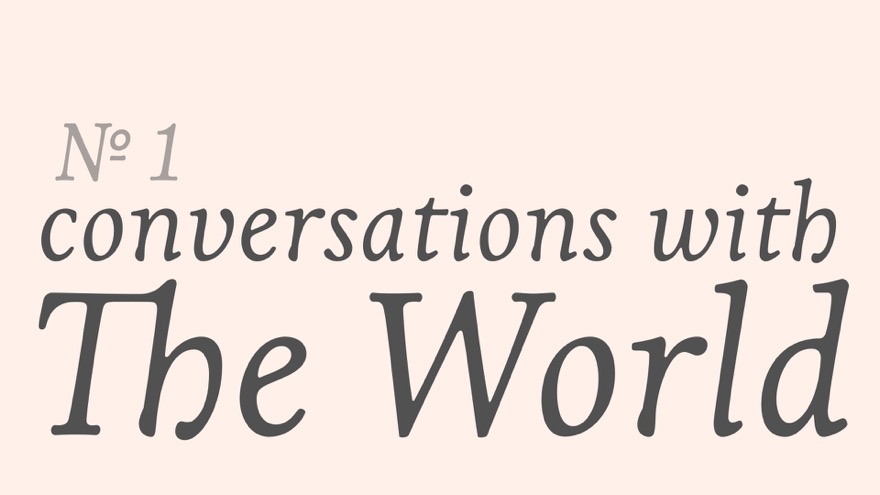
The first kind of conversation I want to talk about is conversations with the world — all the people out there who give you feedback on the things you make.
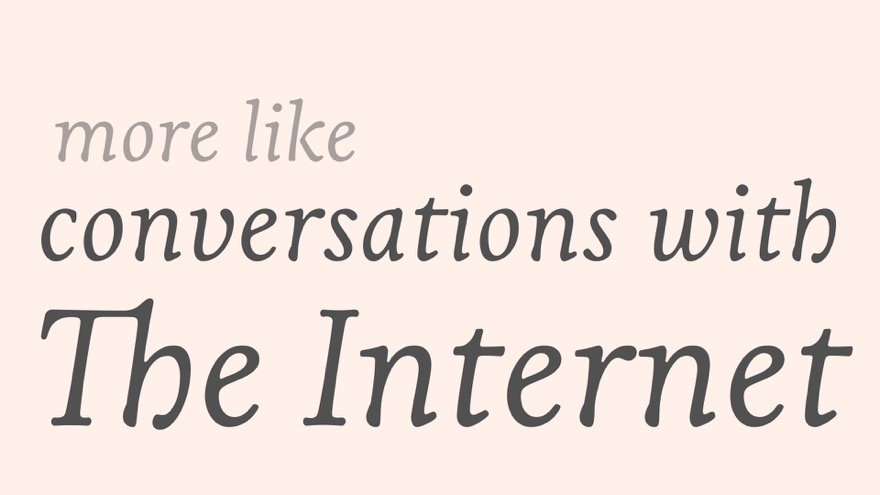
And really, this is more like “Conversations with the Internet”, because most of this feedback is going to come to you online. It’s easy to forget that the internet is not the world; I am always amazed when I step away from Twitter and blogs and stuff to talk to people face-to-face, and I realize that they’re so calm and kind and human. It can’t be said enough that the people who take the time and energy to post online about software are not an accurate cross section of the people who use software.
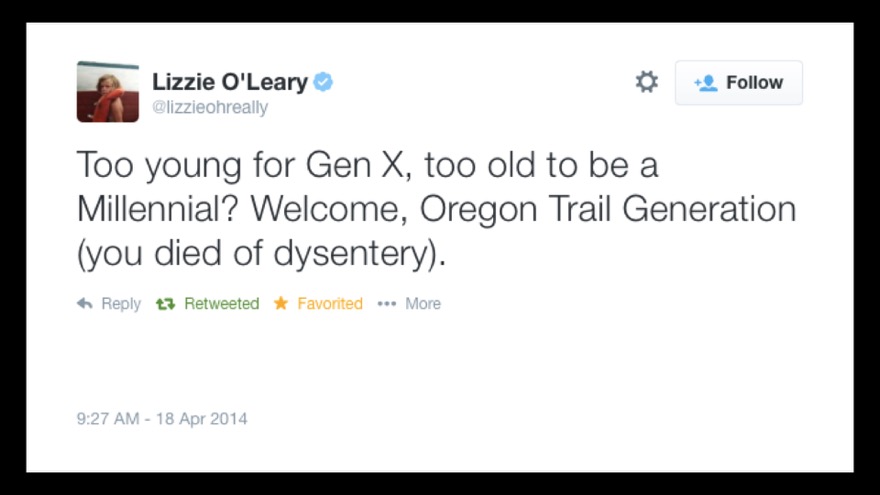
I love this. Here’s a tweet from Lizzie O’Leary about the weird generation I occupy in between Generation X and the Millennials. We’re of this age where we can remember when “computer” meant the Apple II that you played Oregon Trail on at school. We can remember what it was like before the Web was a thing, but then when it came along we were still young enough to grow up along with it.

And I wanted to believe that the internet is essentially good, and that it’s pushing humanity forward.
But I am gradually coming to admit…
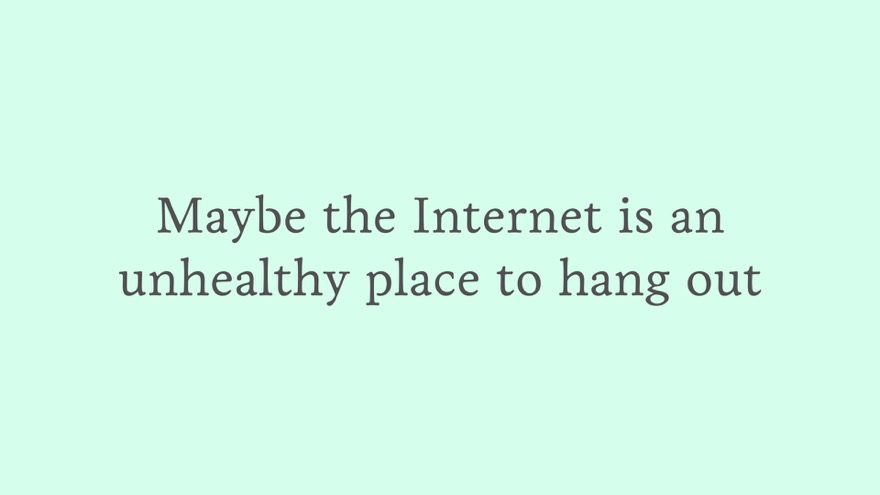
…that maybe the internet is an unhealthy place to hang out.

Kind of like how it feels impossible to eat healthy in certain areas of the US. You’re driving on the highway, and all your options are fast food. Well, this is a system with certain values built into it. For the businesses, all the capitalist incentives reward making more, cheaper, faster, less-healthy food. For the individual, your savannah hunter-gatherer motives reward getting as many calories as possible with as little effort as possible.
This section is probably subconsciously inspired by The Internet With a Human Face — and this web version of my talk is admittedly inspired by it!

Here’s that timeline again. Look how long we spent before we learned to grow our own food — no wonder our culture has a weird, unhealthy relationship with food now that we have an esesntially unlimited supply of it. Similarly, look how long it took us before we had to deal with lots of people from outside our immediate tribe, once we started living in cities. Our brains are not set up for this stuff!
For an enlightening look at our modern relationship with food, try The Omnivore’s Dilemma by Michael Pollan. I’ve also heard good things about the attention-economy equivalent, The Information Diet.

Let’s look at another technology. If systems have values built into them, and they encourage certain behaviors, then how about the car horn? This is a system for making an irritating noise that other people hear louder than you do, and there’s nothing they can do about it.

It’s a communication medium that can only send one message: HEY.
In fact, most cars honk the tone F.
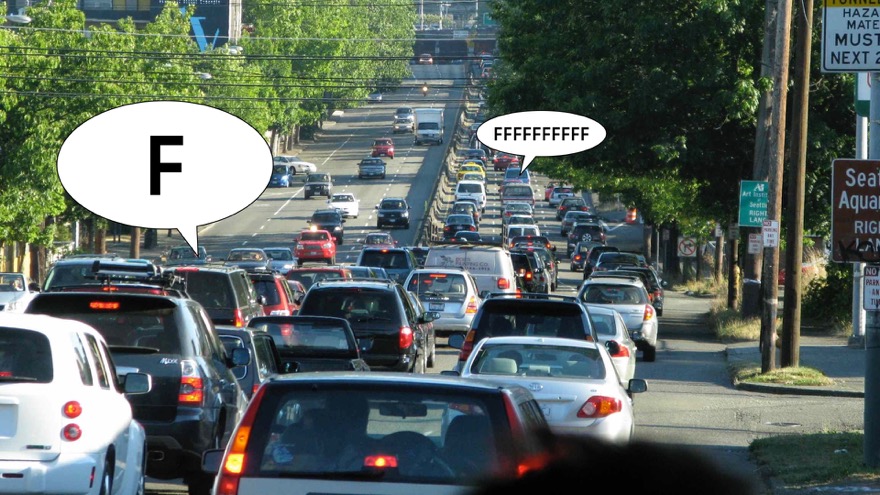
So it’s more like this. F! FFFFFF! This seems so appropriate.
There’s no disincentive to honking at people for the slightest provocation. There’s little recourse for abuse. It’s such an asymmetrical, aggressive technology, so lacking in subtlety. It kind of turns everyone into a crying baby — you can let the people around you know that you’re very upset, but not why.
I think the Internet is like this sometimes, too. The internet is like a car horn that you can honk at the entire world.

These are systems that encourage our anxiety and aggression to come to the fore, so we need to be careful how we let them affect us.
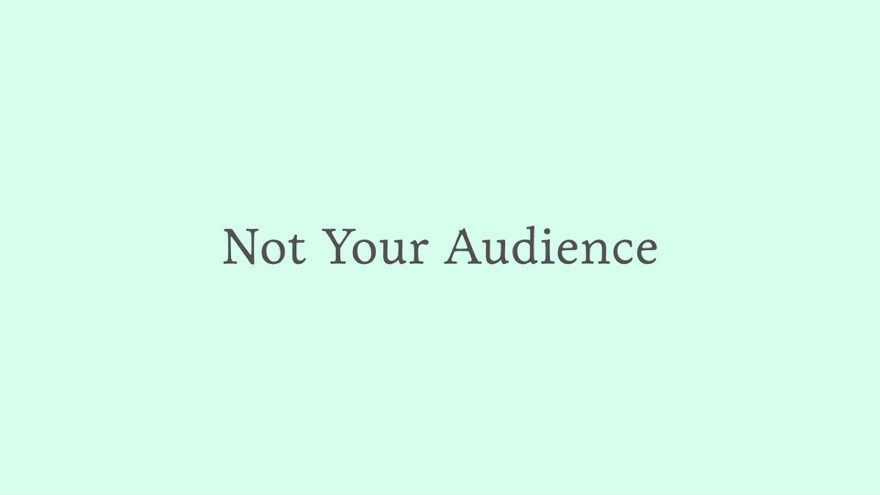
Let’s talk about some people you’ll meet on the internet who are not really your audience. It’s helpful to accept that there are going to be people out there whom your product just is not for, so you can stop worrying so much about what they say.
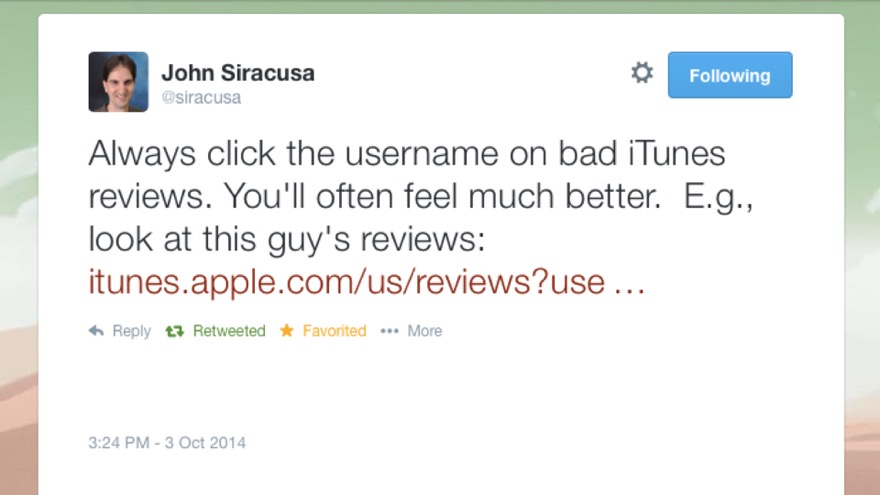
John Siracusa! What a wonderful person. This tweet encourages you to check all the other reviews written by someone who gives you a bad review. The link (which is, sadly, now gone) showed all the horrible, one-star reviews that a certain user had left, personally insulting the developers in each one. (Except for a glowing five-star review for the official Podcasts app, for some reason.)
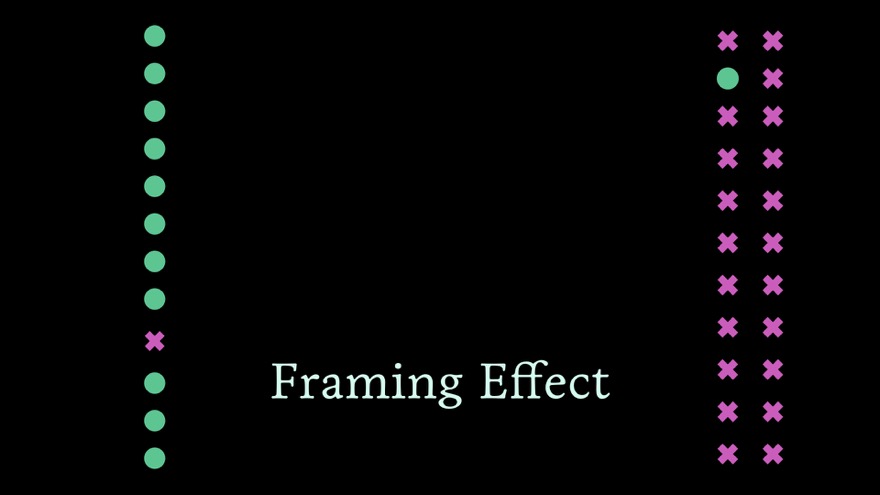
This is a great example of a cognitive bias. When you see a bad review among a bunch of good ones for your app, you might wonder guiltily why you’ve let that person down and how you could have served them better. But when you see it among a pile of other cruel reviews by that user, you realize maybe they are just a mean person who likes beating up on others’ work.
The framing effect is our tendency to interpret the same data point differently depending on what’s around it. When you’re tempted to get upset about something, consider how it’s framed.
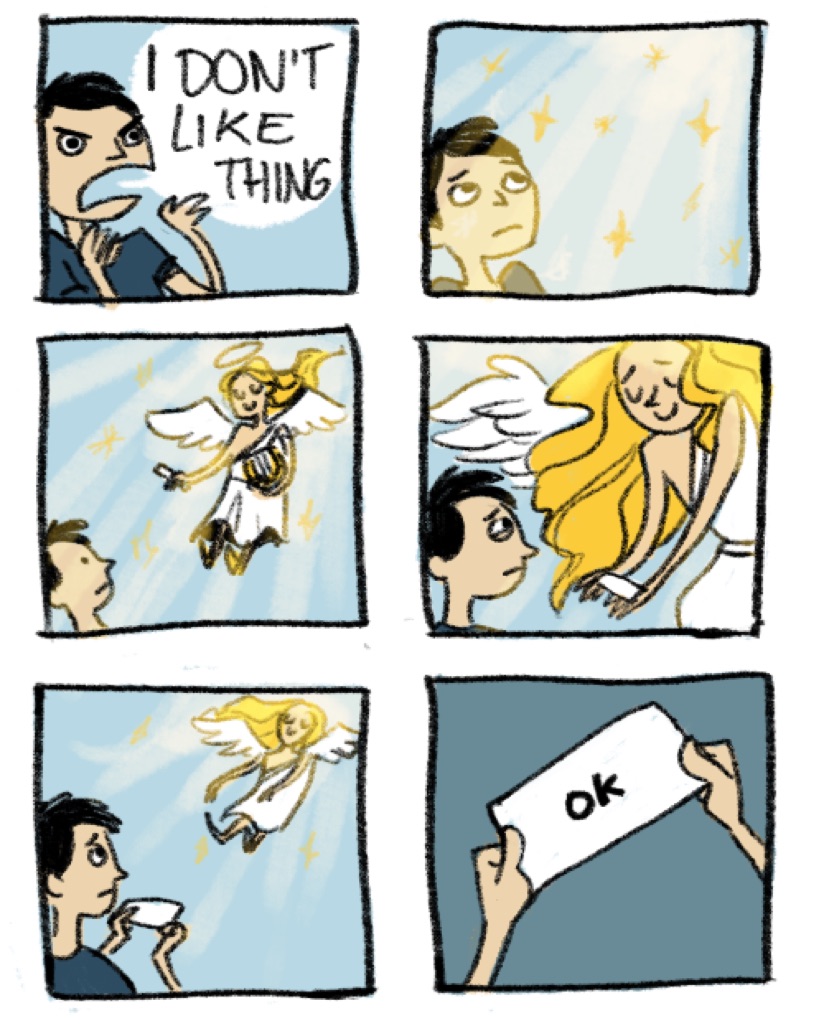
I love this comic so much. Sometimes people just really want to let the world know how smart they are for not liking something, and they’re going to use your work to do so. Not that they have specific suggestions for improving it, oh no. They just want to make sure everyone hears them disliking it. It’s not really clear what kind of response they want for this. Do they expect people to come out of the woodwork and applaud them because they didn’t fall for it? Do they want an apology from the person who made the thing? I guess the only thing you really can say to someone so unhelpfully critical is… “OK.”
This comic is all over the web uncredited, but it’s originally from joscribbles.tumblr.com!
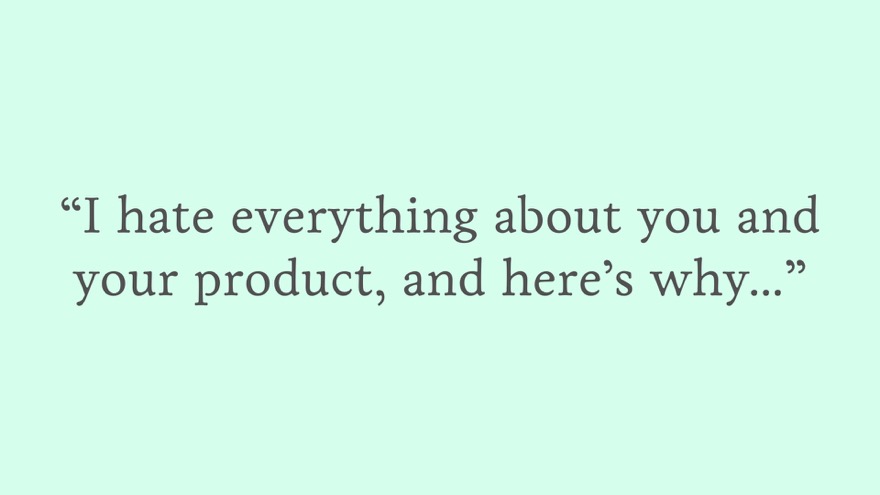
When the message you get is “I hate everything about you and your product, and here’s why”, when people send in detailed, annotated screenshots of everything you’ve done horribly wrong, or unsolicited mockups of how you should completely redesign your product, don’t take it to heart. If they expose real problems in your design, pay attention to that, but don’t put too much importance on the opinions of people who were not on board with your goals in the first place.

That feedback speaks directly to your anxiety and your aggression — those deep-seated, emotional soft spots that make you want to defend and retaliate.
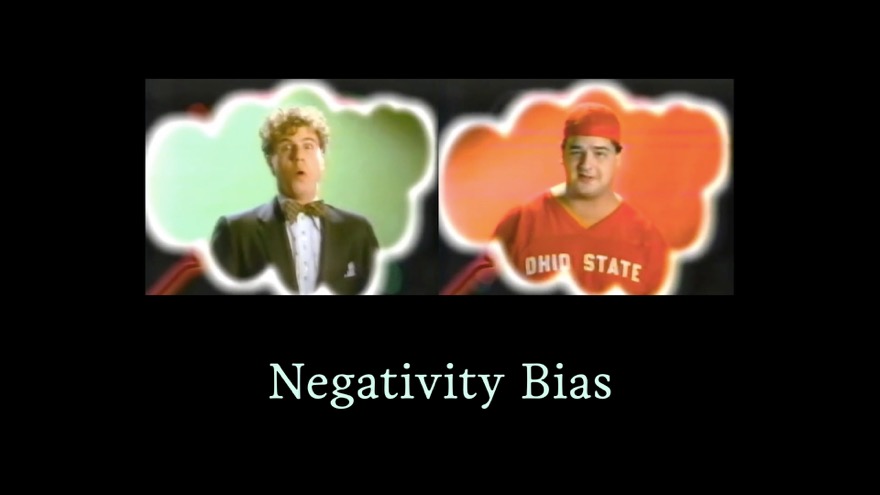
And those super-defensive voices are responsible for negativity bias. This is the brain-bug that makes you focus on bad things way more than good things. It makes sense — when you’re trying to survive on the savannah, ignoring a potentially bad situation could be deadly. But now, it often just makes you feel awful.

This comic perfectly illustrates negativity bias at work. By the time this person goes to bed, all the positive things that people said have faded away, and only the single negative comment remains.
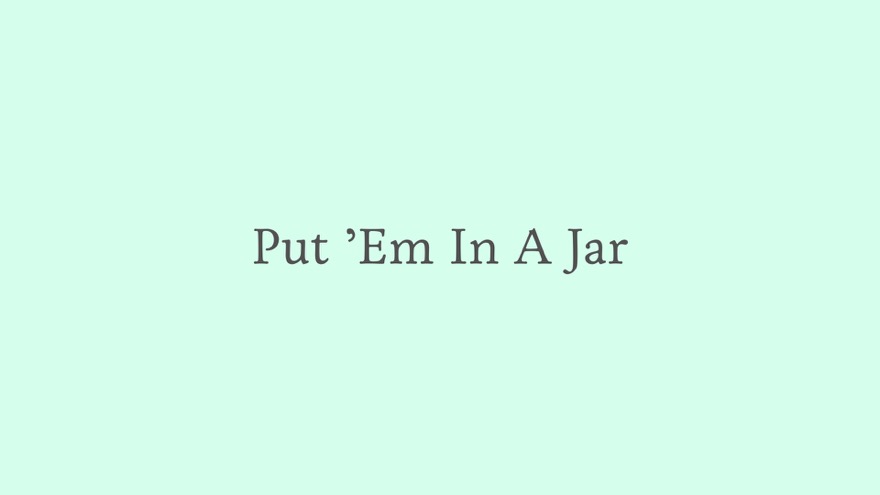
It can be hard to ignore the loudest voices, though… So what do you do? The writer Anne Lamott has a trick for getting yourself to write, even when your head is full of negativity. First, imagine each voice as a little mouse. Then, one by one, you pick ’em up by the tail, and put ’em in a jar. Screw the lid on the jar so you can’t hear ’em. Then let them squeak and scream all they want, while you get on with your work.
This practice comes from Anne Lamott’s marvelous book on creative writing, Bird By Bird.

Some people even write what the voices are saying on little pieces of paper and put them in an actual jar — I imagine that’s quite therapeutic!
Now… I’ve only had one person that I’d say really harassed me online. This is someone who butted into my Twitter conversations with friends in order to criticize products I’ve worked on. They took my favorite art and music and design inspirations, things really special to me, and posted them up as examples of what poor taste I have. They insinuated that I’m in the wrong line of work, or that I should be fired. Eventually I learned to put ’em in a jar. But for a while there, it literally kept me up at night, and ruined whole days of my productivity.

And yet, I know that I have it pretty good. That’s nothing compared to what some folks have to deal with. I’m pretty sure that’s because I look just like what people expect to see in my position. If I were a woman, a person of color, visibly queer, disabled, or in any other way not the stereotypical image of what people expect to see in this industry, you can be sure it would be orders of magnitude worse.
For people who have to put up with this sort of thing all the time, because of who they are, it gets to a point where they can’t just ignore it. No jar is big enough to hold all of that. And that is absolutely not fair. Again, I really want us to become an industry where having a cynically super-thick skin is not a prerequisite for participation.
If you want to help, there’s a heck of a lot of consciousness-raising material linked from this Feminism for Nerds megapost.
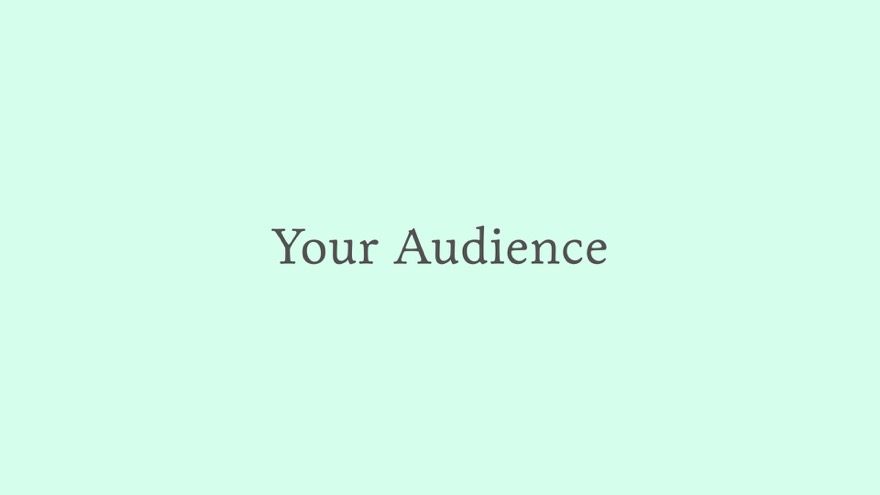
I’ve been pushing hard on who not to pay too much attention to. But that doesn’t mean you should ignore all negative feedback. There are some people you might be tempted to put in a jar but that you shouldn’t.

Like critics — people doing actual serious critique of your work — whose opinions you have a history of agreeing with. I’ve had some people I really respect say and write some very kind things about products I’ve worked on, and that’s intensely gratifying… for like an hour. But the criticism certainly sticks around in my mind for years.
One very well-regarded writer, who I like a lot, once said our our product was like “a jet fighter outfitted with a backhoe”. This was valuable to hear! Our app was powerful, sure, but it could get pretty awkward to use. We took this criticism to heart, and I think we made the product better because of it.

The first app we ever shipped with me as UX lead was described, by probably the most widely-read and respected writer in our community, as…
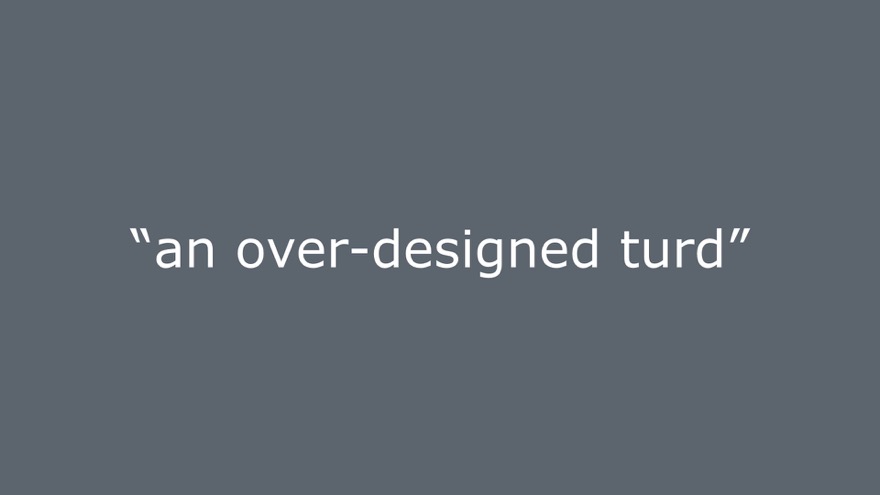
Yeah… “an over-designed turd”. This, too, was valuable to hear! We took it to heart, and I think we made the product better because of it. We didn’t just ignore it, because we knew that this was someone whose insight we valued, before they ever spoke about our work.
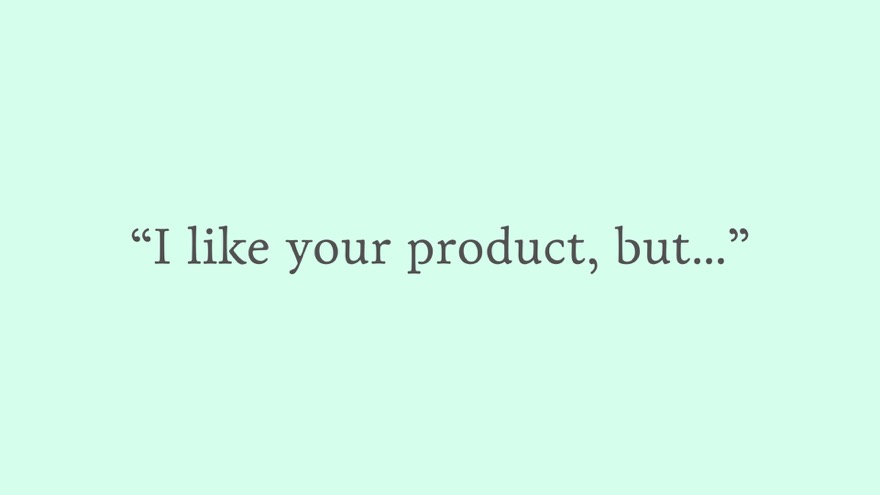
When the message you get is “I like your product, but…”, that’s a good sign. Listen to the critique that follows, because this kind of feedback comes from people who are on board with your mission but have ideas about how you could achieve it better.

Feedback like this speaks to your whole brain, not just the parts that disproportionately care about negativity and conflict.

Most of all, don’t ignore kudos. (I guess I have this ’90s TV theme going on here. Do you remember Kudos bars? They still make them.)
When people take the time to tell you that they love your product, pay attention. Pay more attention than you think you should. People are way less likely to contact you just to say everything’s going great, so when they do, grab onto it and use it to balance out your negativity bias.
At Omni, we have an internal email list where our fantastic support team sends around the nice things our customers write in. Sometimes, hearing that your work genuinely improved someone’s life in some small (or big) way is what keeps you going.

The reality is usually subtler than just “who to listen to” and “who to ignore”, though. We tend to want to divide things clearly into black and white, good and bad, right and wrong; this is a duality that’s built very deeply in to the human mind.
Okay, I am going to show you something gross. Get ready.
Scrolllllllllll

Get awayyyyyy

Most people have a pretty visceral reaction to seeing a huge cockroach. Paul Rozin did a study where he took a sterilized cockroach and dipped into a glass of orange juice; then he tried to convince people to drink the juice. Of course, nobody did! Even though they knew intellectually that there was no risk of contamination, their ancient disgust response was not going to let it happen.
This response started out as an instinct to avoid things that are physically bad for us, but it’s had emotional and social applications bolted on since then. So now, we can often also see people or even ideas as tainted.
I’ve certainly had the experience of vouching strongly for a design idea… until it’s also suggested by someone I don’t get along with. Just a minute ago I was saying we should definitely include this feature, but once you tell me it was demanded by a particularly caustic user? Now I’m not so sure I like it anymore!
This is how platform wars start, too. We pick a side, and think that nothing about the other side could possibly be any good. I spent years rolling my eyes at big Samsung phones, saying that people look ridiculous using them… until the iPhone 6 and 6 Plus were announced. Then I’m all, “Well, a bigger phone might be kinda cool……”
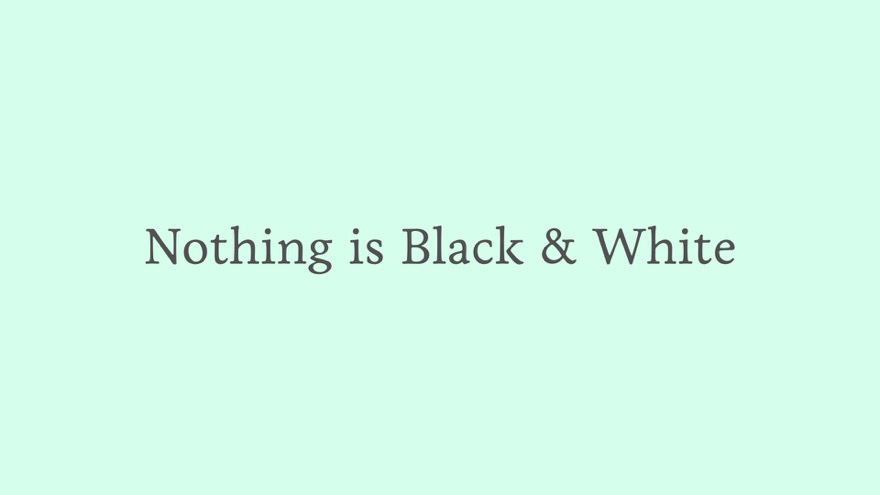
The truth is that nothing is black & white. We have those primal feelings like revulsion, jealousy, and tribalism, these hyper-simplified split-second reactions that helped our ancestors survive. It’s “natural”, sure. But we know better now, and we have an obligation to use our enlightened thinking to get a subtler, more accurate picture of the world. Almost every time, there is more nuance and more to learn from a situation than what our gut tells us.
There is a lot about these deep-seated value axes in The Righteous Mind by Jonathan Haidt, also mentioned above.

Okay, we made it to number two. Let’s talk about the conversations you have with your colleagues — the people you work together with to design and build things!
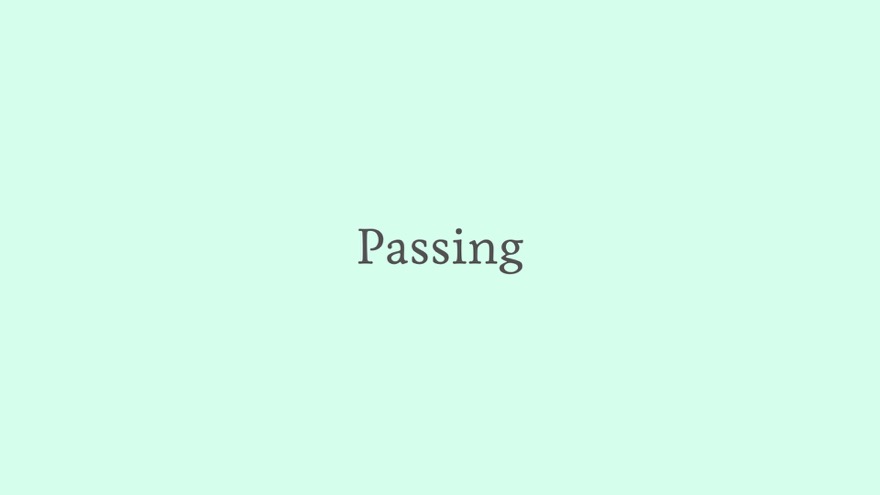
So much of a design role is in how much other people believe that you know what you’re talking about. You can’t quantify what makes someone a good designer. And this unquantifiability can cause tension. Passing is a sociology term for whether the way that you identify yourself matches with how other people see you.
Nobody Passes by Mattilda is a pretty intense compilation on the concept of passing, specifically focused on gender.

Here’s my dear friend Nikki talking about identity. “People don't react to who you are, they react to who they perceive you to be.”
I was originally hired at Omni to write documentation. But I complained about design bugs enough that when the time came to create a new UX team, I was nominated to lead it. All of a sudden, people were coming to me with design questions, even though at the time I’d had no design training or experience. It freaked me out a bit to be seen as an expert all of a sudden. Why did people think I knew better than them about color, or layout, or typography? It took me a while to realize that while nothing had changed about me, the new title had changed the way that people saw me. This still feels weird.
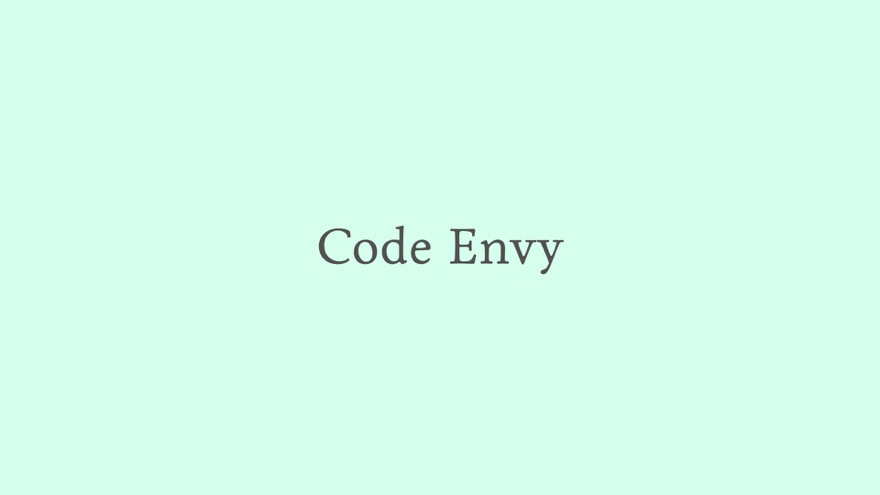
Sometimes we wish design was as quantifiable as code is. In science, there is this thing called physics envy — in physics, especially experimental physics, you can publish these really crisp, unambiguous findings. So the other sciences, especially fuzzy ones like sociology and anthropology, get accused of trying to be like physics when they try to reduce their messy, complex subjects to definitive equations.
I think that similarly, we designers often have code envy.
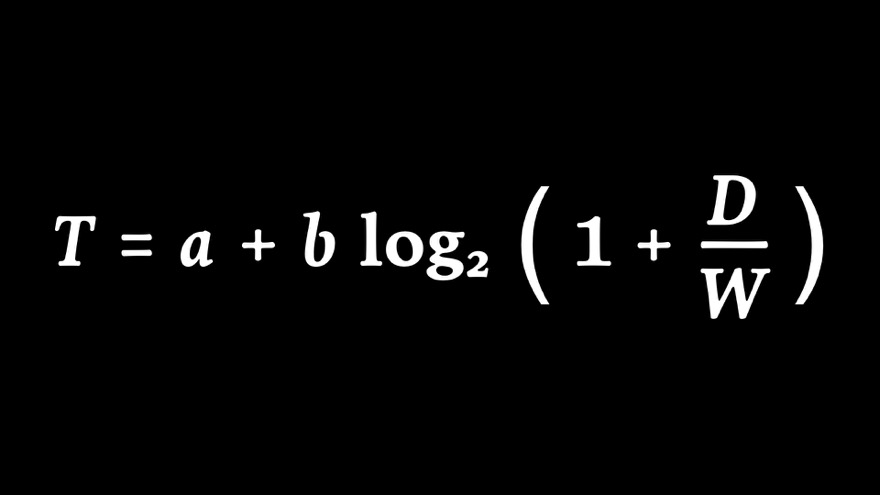


Here’s some real-world Fitts’s law data. It’s a mess!
We want to believe that our opinions can be backed up by references to equations and theorems but experience and taste are pretty much all we have. Instead of equations, we tend to have… guidelines.

This voice, our logical side, really wants to be in charge of our work. It can feel threatening to admit that we’re not working from a place of pure reason and authority.

But in the case of design, pure reason and appeal to authority often don’t produce the best result. We have to let all the different motivations fight it out.
As threatening as it is, don’t try to hide this. We have to acknowledge that this is how we work.
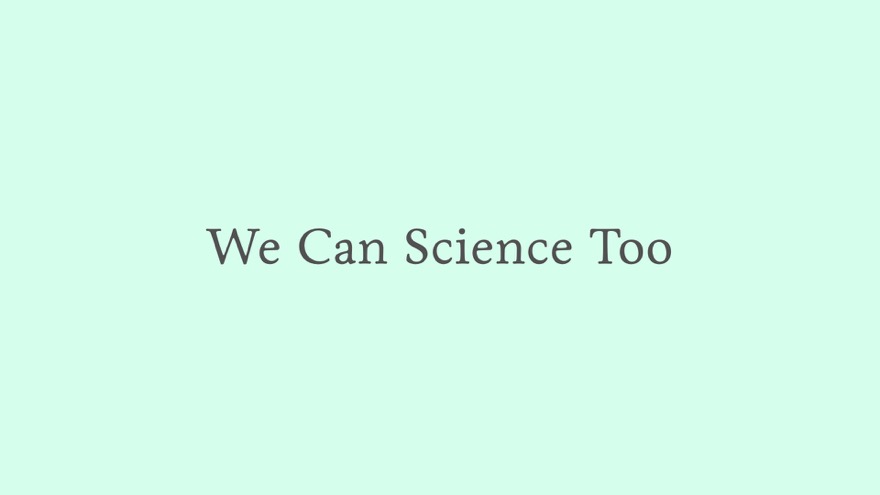
Of course, designers can do science, too. We can A/B test variants of a design and get useful data. We can know how many people buy a thing or give us their email address when the button is green rather than blue. We can even find out how many of our customers use a certain feature, and how often. That’s invaluable. But that doesn’t give us any idea at all whether they’re are actually happy about it. Or how much happier it will have made them a year from now.

You can appease this voice with data…

But you’ll have no idea how it’s going to make people feel in the long term.
I wish these characters weren’t so gendered, but… 1991!
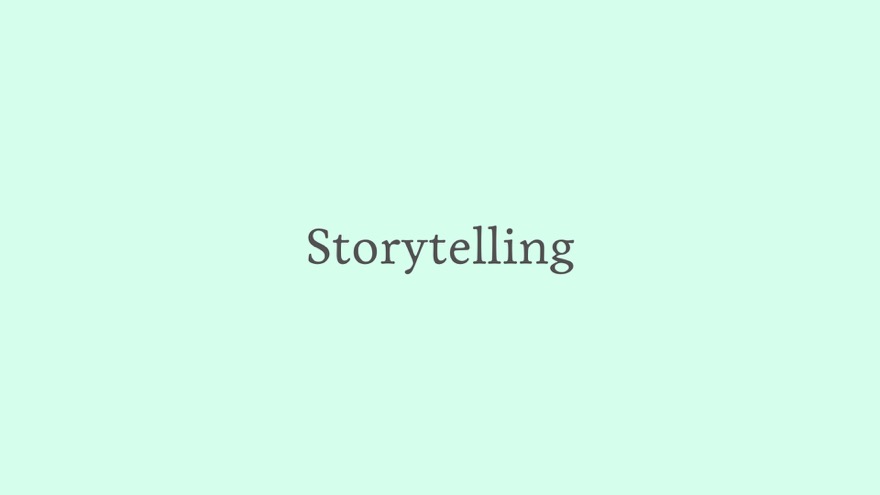
Instead of science, some designers will tell you that what they do is storytelling.

There’s this famous video where Stefan Sagmeister tells designers unequivocally: No, you are not a storyteller. He’s tired of hearing designers act like they’re in the same line of work as great authors and award-winning filmmakers, making stories for their customers.
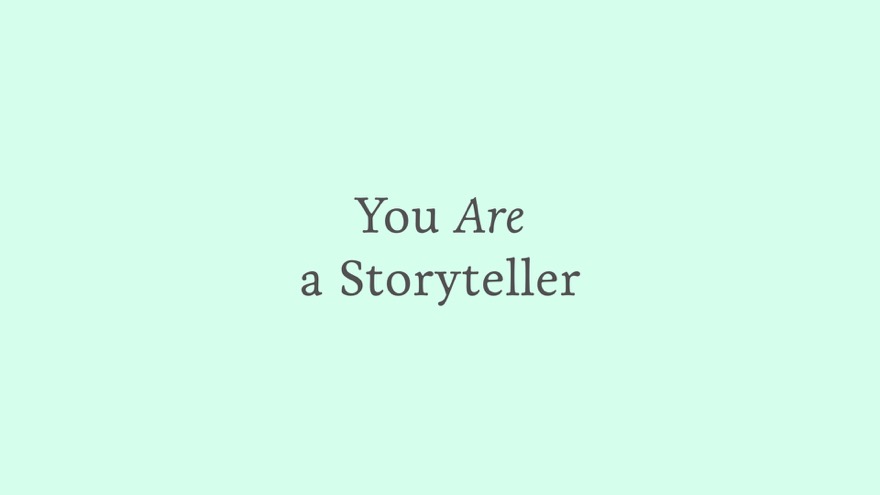
I actually think you are a storyteller. But I’d emphasize it differently…
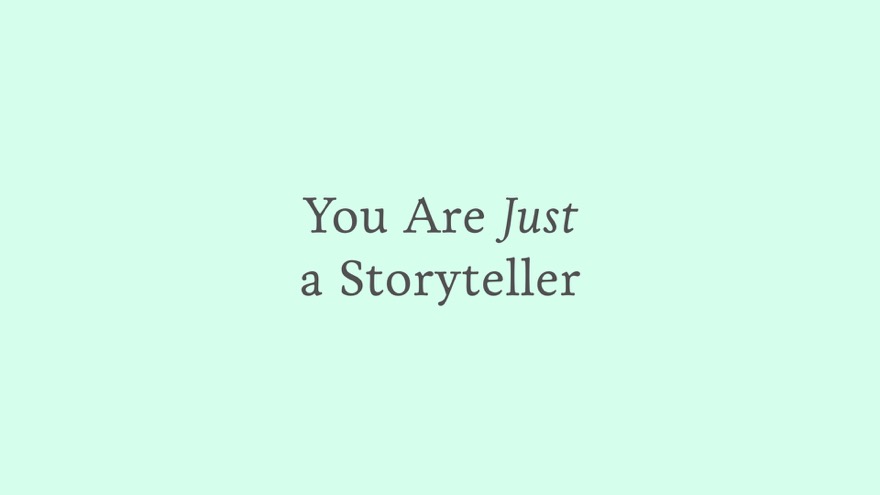
I’d say you are just a storyteller. This should be a humble label. Think less “award-winning filmmaker” and more “that friend you have who tells exaggerated anecdotes”.
In many cases, the only way to try to make sense of a design is to make up a story about someone using it, and see how realistic it seems. Even when you can do research, you end up with all this qualitative data, then you have to come up with a narrative that’s consistent with your findings. You don’t tell fantastical stories to your users — you tell mundane stories to yourself and to your team to figure out how your product is going to work in real life.

All right, number three is about the conversations you have with yourself through all of this.
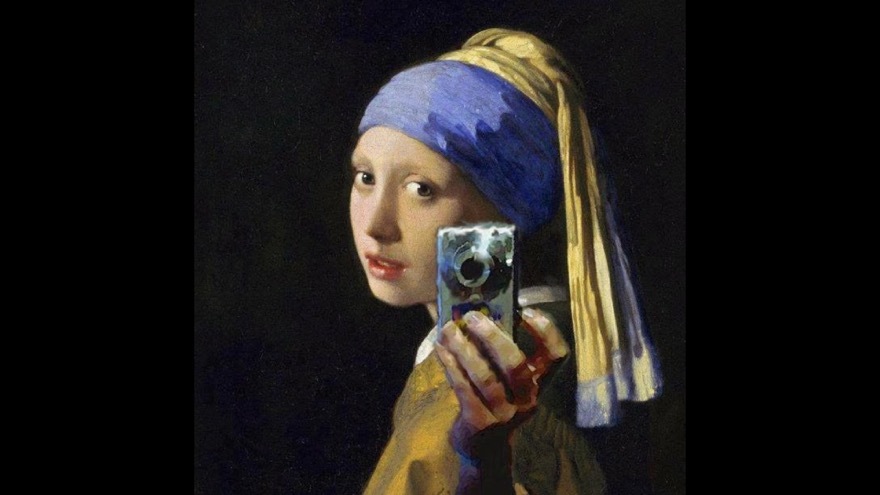
I love this picture, but I have no idea who made it.

If design is just deciding how a thing should be, and everyone does that all the time, and there’s no real way to quantify what makes someone a good designer… How did I get here into this role? How did any of us get to the point where we have “design” in our job description?
It’s true that some of the folks we work with could do some of the stuff we do just as well as we can. But it’s our job to do it methodically, to think about those problems all day, and to take responsibility for the decisions we end up with. To think through all the ramifications of a design problem and figure out all the ways it could go wrong.
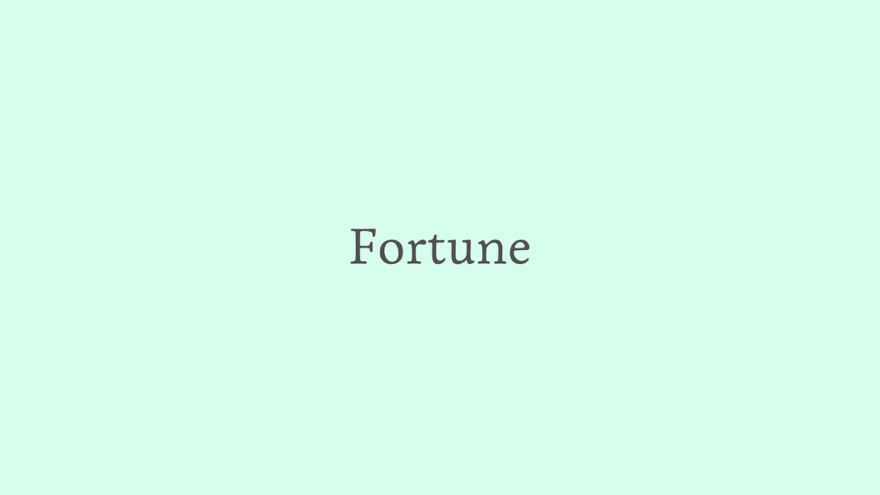
A lot of what put us in a design role comes down to luck. There are lots of people with good taste, who can think about problems methodically all day, and who are willing to work hard.

If you look at the origin of the word nepotism, it’s got the same root as nephew. This seems so appropriate to me — a huge part of why I ended up where I am is because when I was a kid, my uncle Frank got my family a deal on a Macintosh Plus. That Mac is emblematic to me of growing up in a privileged enough environment to have not just a computer in the house, but the coolest, designiest computer there was. And that Mac drastically shaped the sort of person I grew up to be.
Now, that’s not exactly nepotism. It’s not like my uncle handed me a job. But later on, my brother-in-law did get me a job, where I learned programming… and then my other brother-in-law got me another job, where I learned web development… The fact is that I owe so much to lucky circumstances and opportunities.
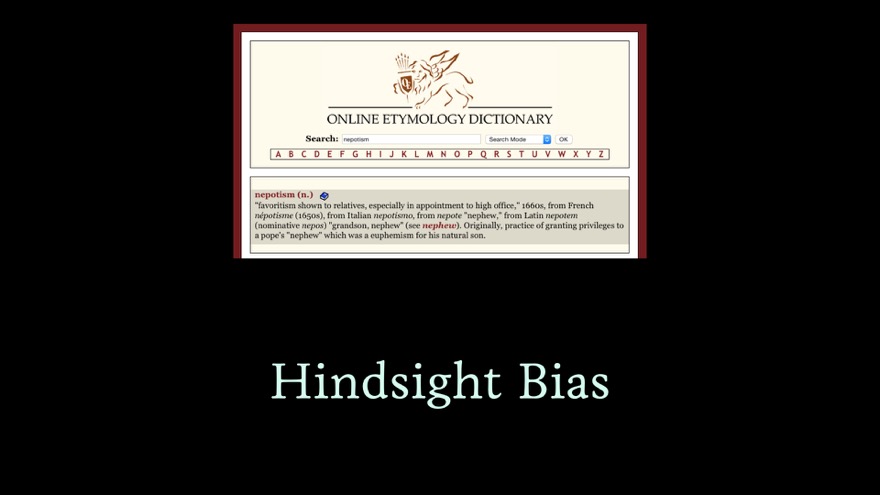
I could look back and claim that it all happened because I was smart enough to see the opportunities and take advantage of them. That of course it all worked out for me, because I’m so great. This is hindsight bias, the effect that makes successful people look back and say, “I knew it all along.” It makes us discount the importance of luck.
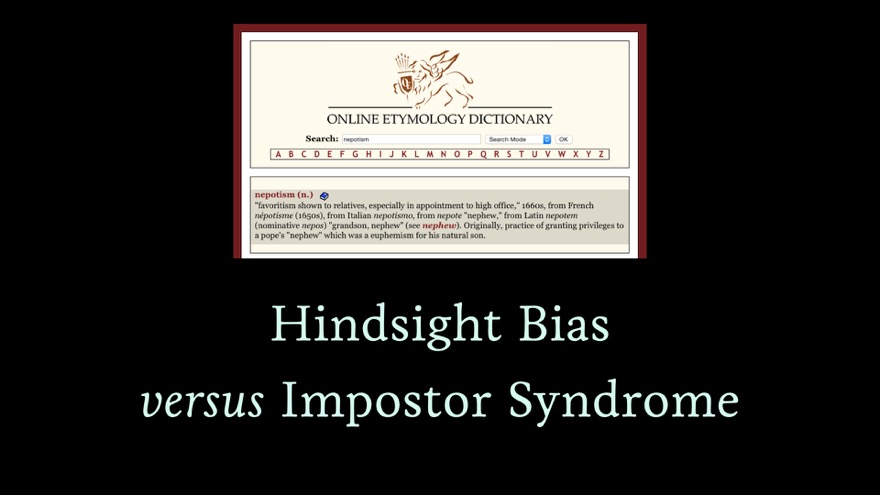
At the same time, lots of us struggle with impostor syndrome. We’re perpetually stressed out by the tension between thinking that we totally deserve everything we have, which isn’t true, and thinking that we don’t deserve anything we have, which also isn’t true.
This is exhausting! It’s important to recognize that this is what’s going on in your head, and not to let either of them get the best of you.
Etymonline, seen here, is a fantastic web site for people who love language.

When you compare yourself to others, you’re especially in danger of letting your cognitive biases and your anxiety take over.
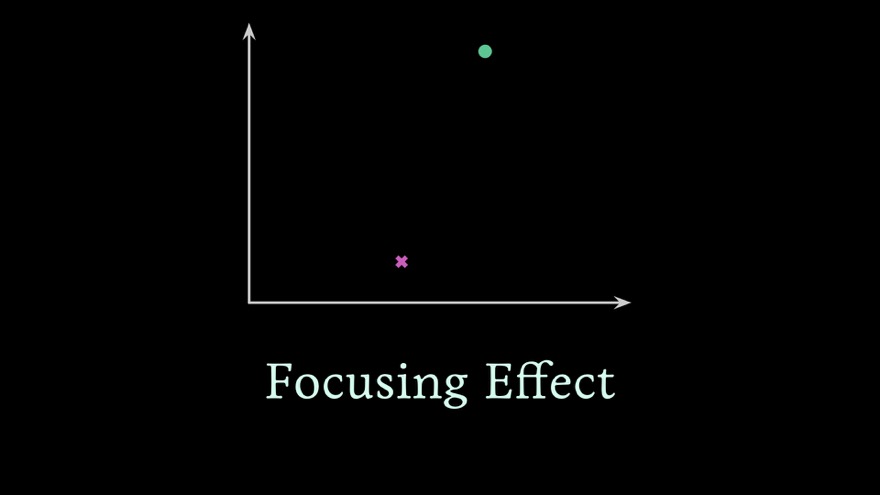
Here we are in the magical world of unlabeled y-axes. Maybe this is… awesomeness, Twitter followers, talent, whatever. When you compare yourself to someone else, you’ll often see yourself as way below, say, someone famous in your field.
This is another cognitive bias — the focusing effect. This makes you evaluate things based on one obvious, visible detail, while ignoring everything that you can’t see. You’re looking at someone else’s public face, and thinking it’s an accurate model of their actual life.
Put another way, you’re comparing their highlight reel to your behind-the-scenes.
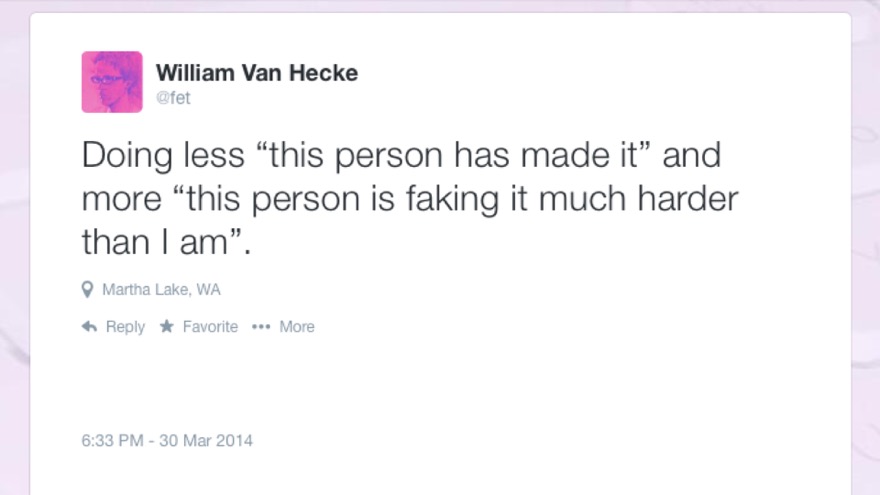
This is probably a better way to see it. When you think someone is much cooler than you, it’s probably actually because they are trying harder at pretending to be cool.
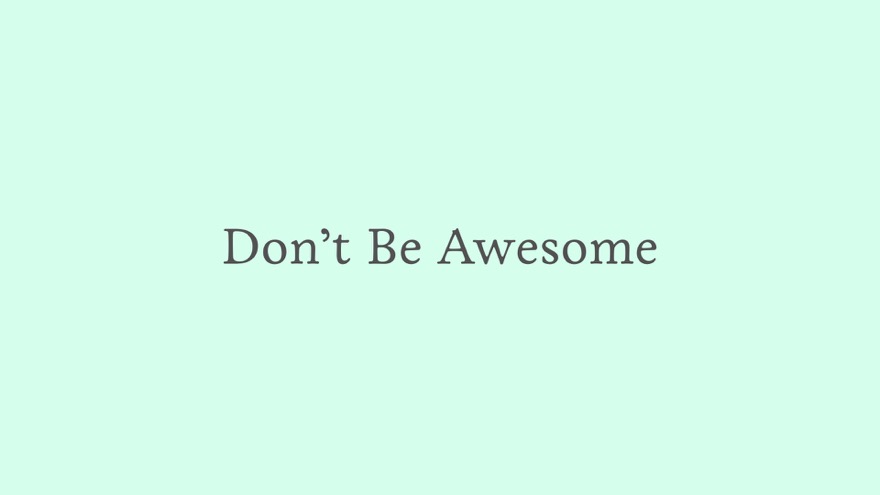
Consider not being awesome.
This is the same as comparing yourself to others, but now you’re up against an abstract ideal. Striving to be awesome all the time makes us feel like failures on all the days when we’re just… human. It makes the people around us worry that if they’re not 100% awesome 100% of the time, maybe they don’t belong here. Instead of trying to be awesome, I think sometimes it’s okay to focus on being good, reliable, and healthy.
Inspired by Not Everything Is Awesome by Andrew Betts. There’s also a lot of food for thought in Job Listings That Don’t Alienate by Erin Kissane.
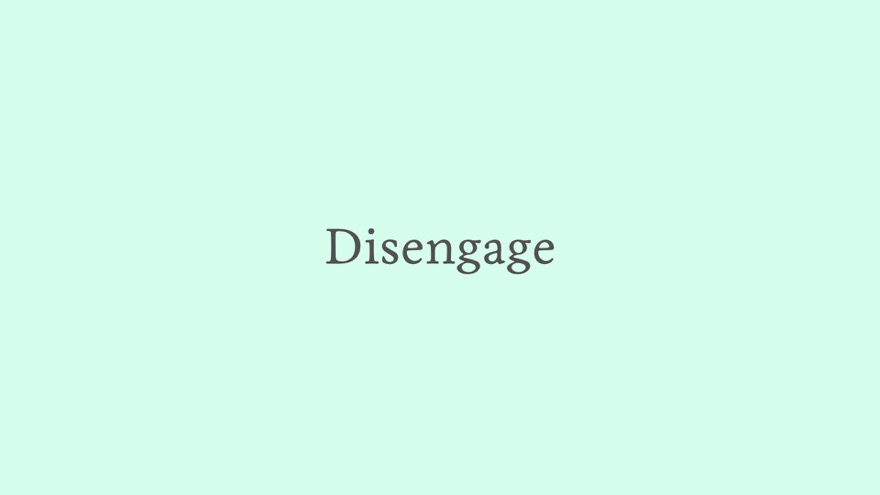
Don’t let the internet boss you around. It’s valuable to realize that you can step away, and that you should step away for as long as you need to in order to stay healthy.
For me, it took a week of reading Japanese comic books on an Alaskan cruise with no internet access to realize this. With some willpower, you can try it without actually going anywhere.
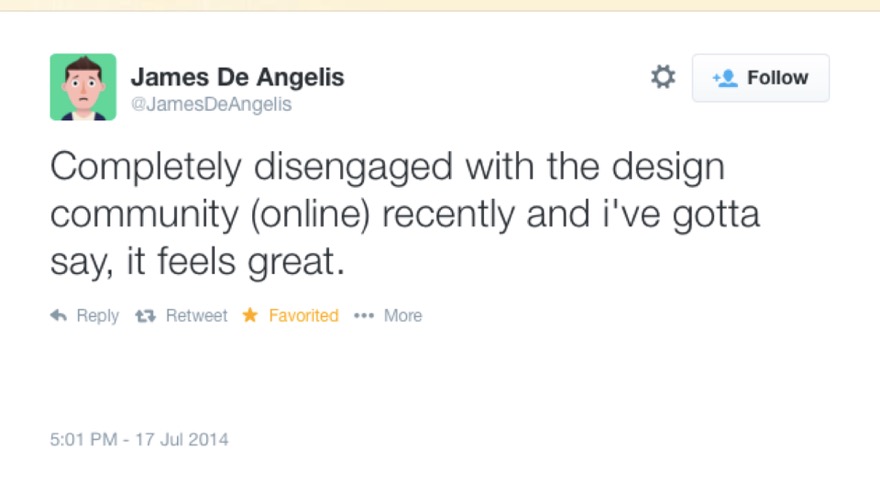
Here’s James De Angelis telling of how he disengaged from the online design community — Dribbble, Designer News, et cetera. It feels great. Your career won’t disintegrate if you ignore this stuff. Being in that type of online space incentivizes tending to what other people think, not to cultivating yourself.
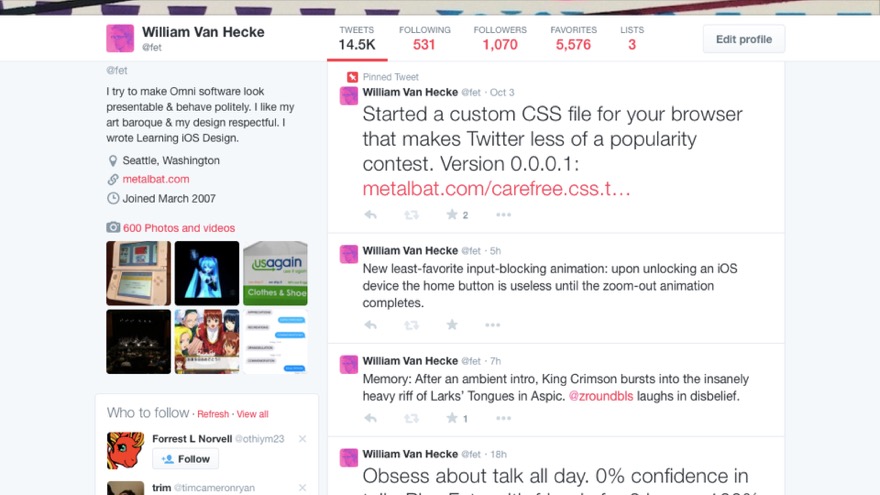
I love Twitter, but I think it has some weird values built into it. Humans have a bad habit of assigning value as a person to outward signifiers of status… So of course we built this thing, a social space where every person and every utterance is labeled with numbers indicating how valuable they are.
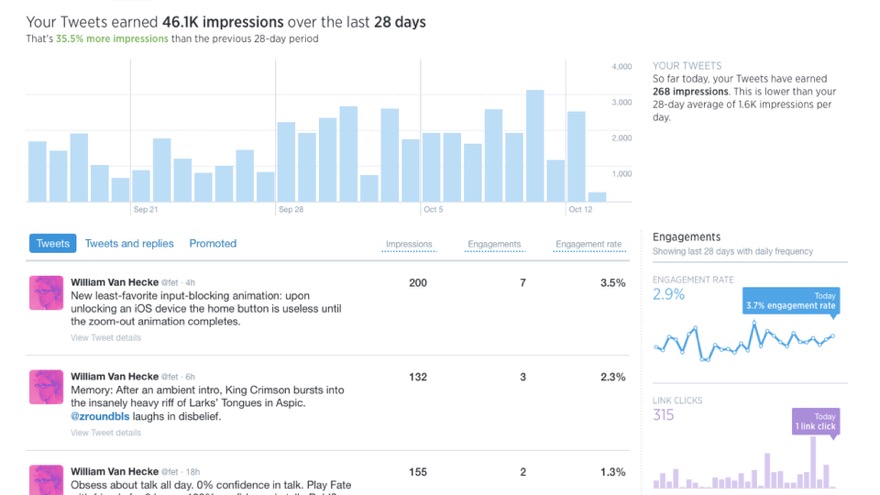
And if that wasn’t enough, then we went and built this thing! Twitter Analytics are kind of terrifying in how precisely they try to quantify each individual person’s worth, and encourage you to conform more closely to the values of the system. If you are a brand, this is very useful. If you are a person, this is perpetual quantitative judgment.

Here’s a bit of CSS that has made my life a little better. This hides all the follower counts, following counts, retweet counts, favorite counts, and join dates from Twitter.
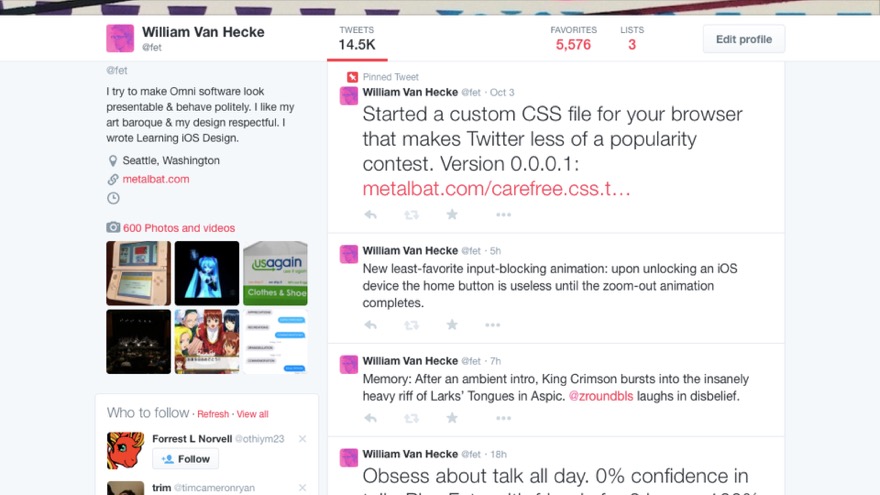
Surprisingly, this works. You might think, why not just tell yourself to ignore those numbers, or not let them color your perceptions of people? Well, because my brain is not that reliable. I keep finding myself looking for a follower count in order to know what to think of someone, seeing the little empty space where the number should be, and remembering, “Oh yeah, I should be judging for myself the merit of what this person is saying.”
Another surprising side effect is that I find myself showing appreciation more. I used to make the excuse that popular people probably get positive feedback all the time, so I didn’t feel obligated to let them know I liked something they did. Now, though, I have no idea who is popular! I have to just err on the side of being grateful and supportive every time.
I also save myself a lot of sanity points with aggressive use of the keyword filtering, user muting, and tweet hiding features of Hibari, an app whose design shows an unusual amount of care for your attention and mental health.

It’s so important to pay attention to your vulnerability. This has been a key concept for me since accepting that my brain works differently depending on who’s driving.

When you’re stressed out, or tired, or when you first wake up in the morning? This is you. You’re flat on your back, and anything you let in from the outside world is going to hit you right in the heart. So be careful! I have the terrible habit of waking up in the morning and immediately grabbing my phone to look at what the internet is talking about today. Even the tiniest bit of indignance, jealousy, or despair that I get from that can ruin my mood for the entire day, before I’ve even sat up!
Or I catch myself doing the thing where I finish catching up on Twitter, so I hit the phone’s home button to quit the app, and then immediately, automatically tap the Twitter app icon again! I clearly didn’t do it on purpose, because I’m all caught up. But my brain has learned that when you see the Twitter app icon, you tap it. It’s insidious.
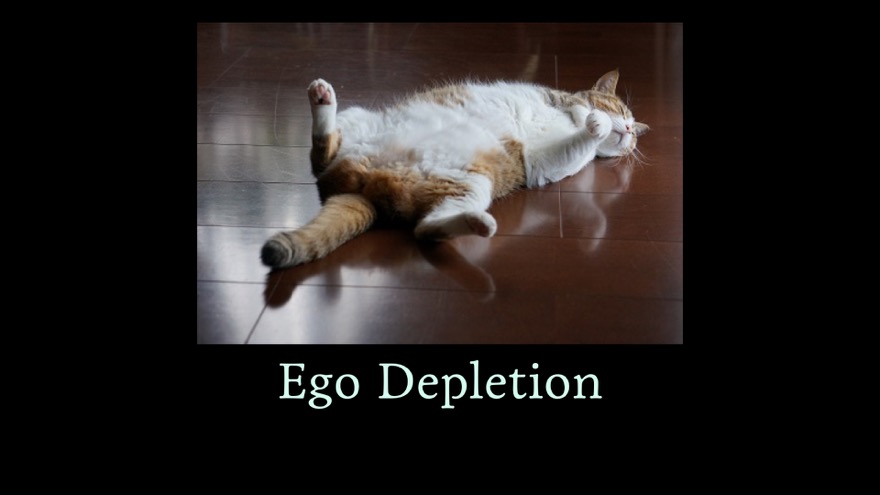
This is called ego depletion, and it’s a real, measurable thing. It’s been shown time and again that we only have so much willpower to spend on making decisions and staying mentally stable. When you run low, you become vulnerable.

When you’re vulnerable to the whole world, your anxiety comes to the forefront. You aren’t thinking with your whole mind.
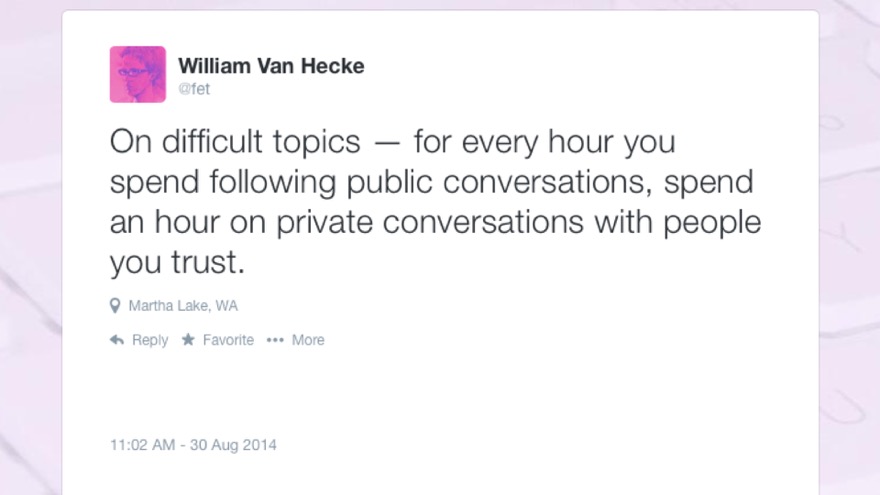
When you’re vulnerable with a friend, though, it can level up your relationship. I decided that for every hour I spend reading about what strangers think online, opening myself up to what they think, I should spend an hour talking with close friends in private. This helps to avoid just seeing every topic in terms of statistics and exaggerated arguments, and instead to see it in terms of individual humans having genuine feelings.
Some of this thinking came from The joy (and a good dose of pain) of my first few months at Basecamp by Conor Muirhead. The way publicly-shared opinions tend to get exaggerated, and individual voices get drowned out, is the Spiral of Silence.
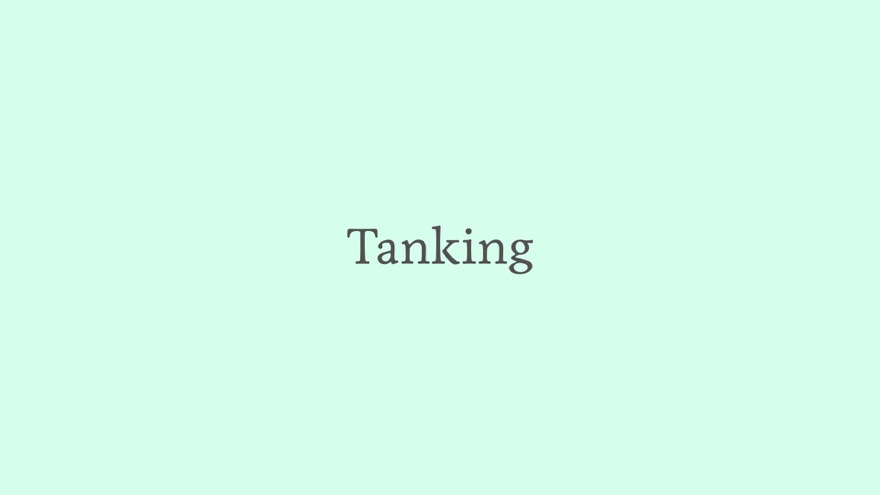
When you’re not feeling vulnerable, when you’re actually feeling strong, sometimes the best thing you can do for yourself and for the people around you is to just listen. I have come to think of this as tanking, a concept that comes from video games.
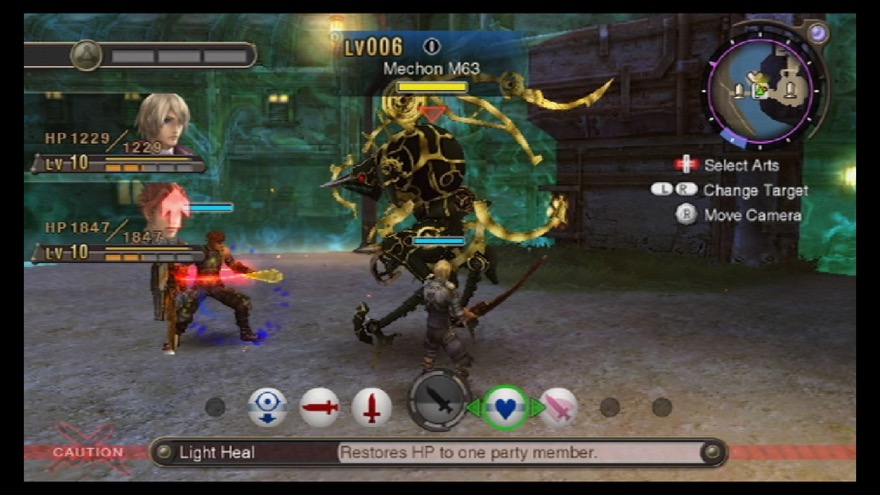
Here’s a big evil robot beating up on Reyn in the game Xenoblade. In an RPG, the tank is a character whose job is to stand right up in front of the enemies and just take damage. They’ve got plenty of hit points and armor, so they can just take it all in.
This is what really good listening feels like for me. Someone has something they’ve just got to talk about, say it’s a coworker who’s frustrated about something, and you just take it all in for them. Instead of the negativity getting spread around into the whole group, you can absorb it all yourself in a way that doesn’t hurt you. Afterwards, you can consider what to do about it. Sometimes something needs to be done, and with clearer heads you’ll be in a better position to figure out what. Sometimes, nothing needs to be done — you just needed to listen, and now all that pain is just gone.

I think I am getting better at that. It’s good to admit your strengths. Someone recently noticed that apparently I’m pretty good at context-switching. I can be deep in a design discussion for one product, and then when someone comes up and asks me about a problem deep in some other product, I can page it into memory pretty quickly and have a good conversation about it right away. That’s something to be proud of, and I didn’t even realize it was a skill that might be desirable.
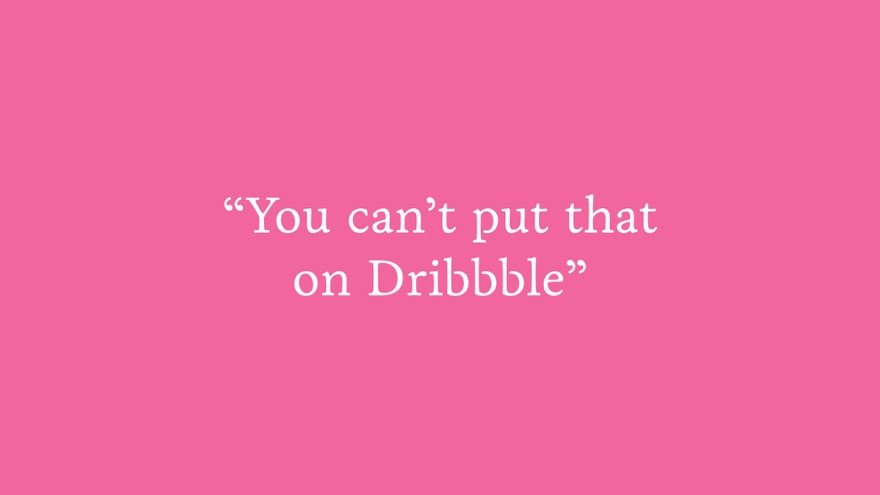
As my dear friend Jon says, “You can’t put that on Dribbble.” Stay on the lookout for this sort of thing — what makes you a good designer or a good person to work with are not necessarily the same things that get you retweets or make you internet-famous.
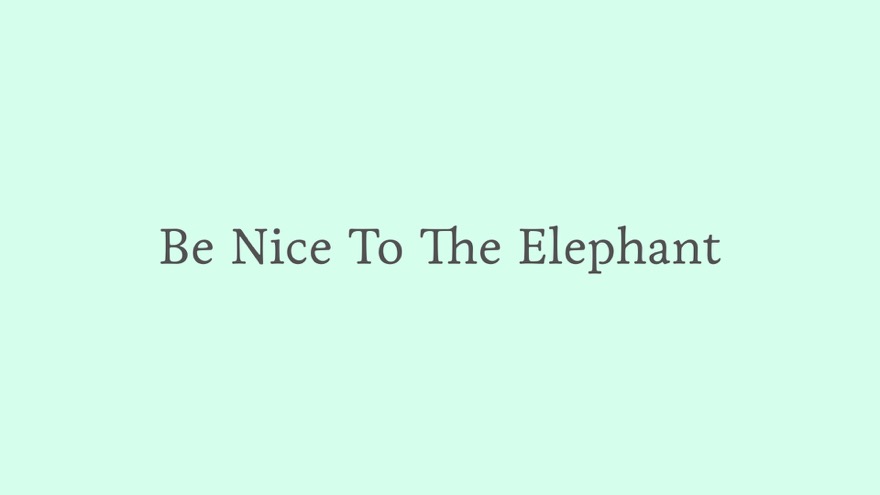
If most of your brain is a big, dumb elephant, you’d better take good care of it.

Don’t try to read this page off the slide. It’s just up here because I want to point to it as probably one of the most influential pages of text in our community. This is the introduction to Cocoa Programming for Mac OS X, where Aaron Hillegass tells us to get ten hours of sleep per day, and not to let our brains tell us that we’re stupid. This is physical and mental self-care, and it makes a huge difference.

Okay. Conclusions? Question mark? Here are the things I have tried to keep in mind as I think about all this stuff.
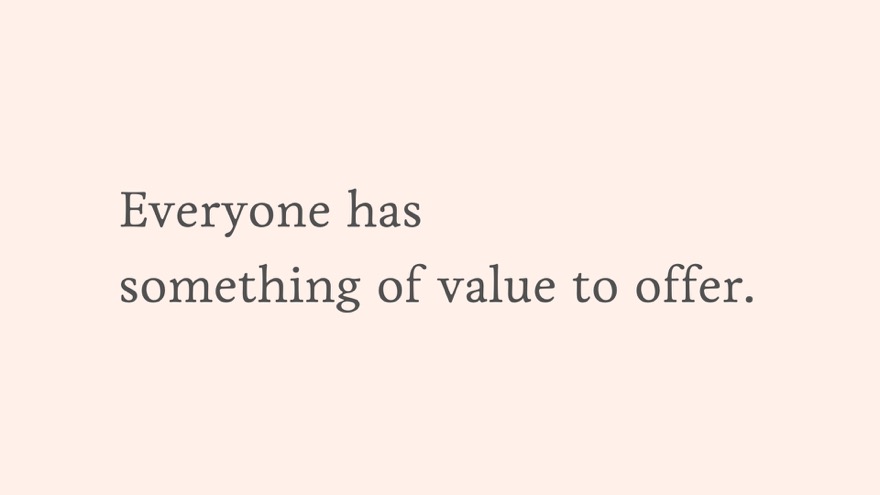
Everyone has something of value to offer. It might be hard to find sometimes, but it’s there. Every single thing you hear, from strangers to your teammates, try to find the value in it.
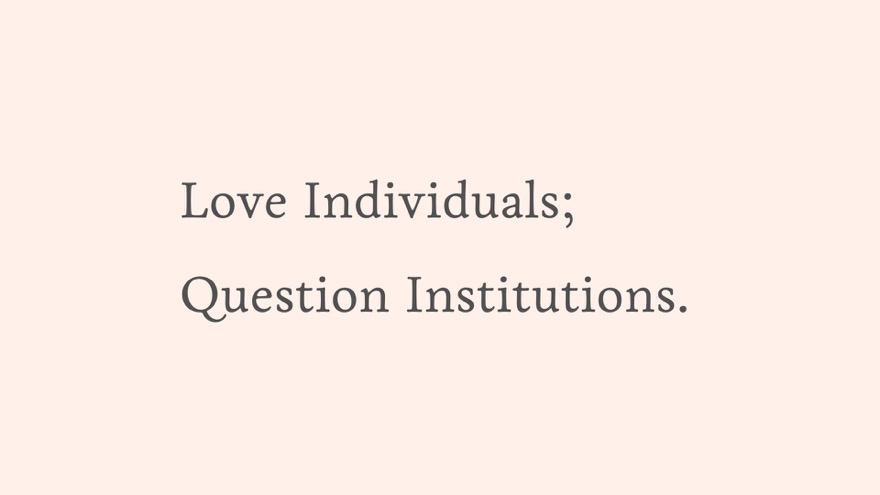
Love Individuals; Question Institutions. I tend to think that everybody is doing their best. But we have some systems in place that incentivize people to act less human and less compassionate.
True sociopaths are the exception, of course, and probably at the root of a lot of the worst systems. What scares me the most is that the greater internet seems optimized to help sociopaths to do their thing, without doing much to help the rest of us stay safe.
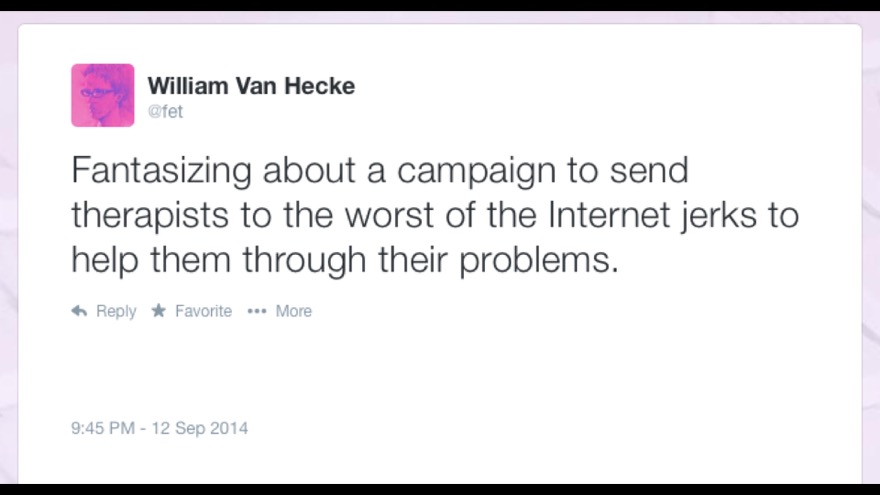
Here I am despairing about Gamergate — fantasizing about a campaign to send therapists to the worst of the internet jerks to help them through their problems. I don’t want to wage war on anyone; I just want to find out what’s wrong and help fix it.
Here are my two favorite posts about Gamergate, because they humanize both sides: Felicia Day’s Crossing the Street, and Arthur Chu’s I’m not “that creepy guy from the Internet”.
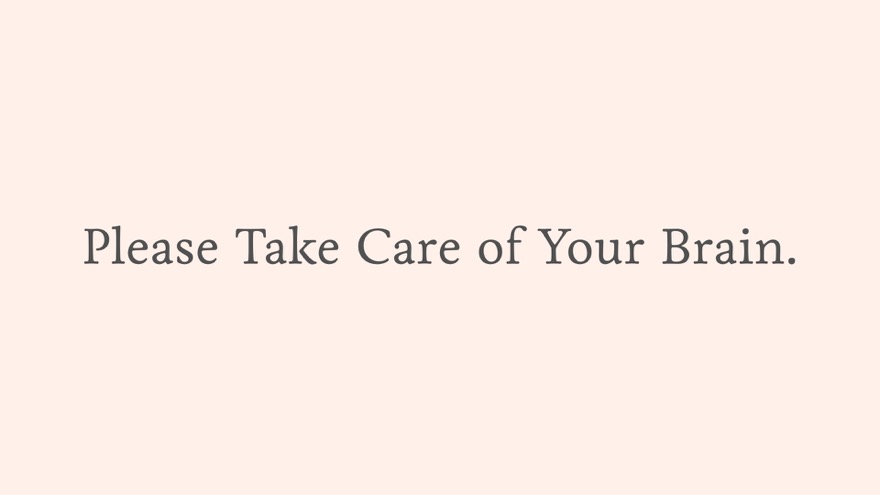
And lastly, please take care of your brain. Because it’s not necessarily going to take care of you.
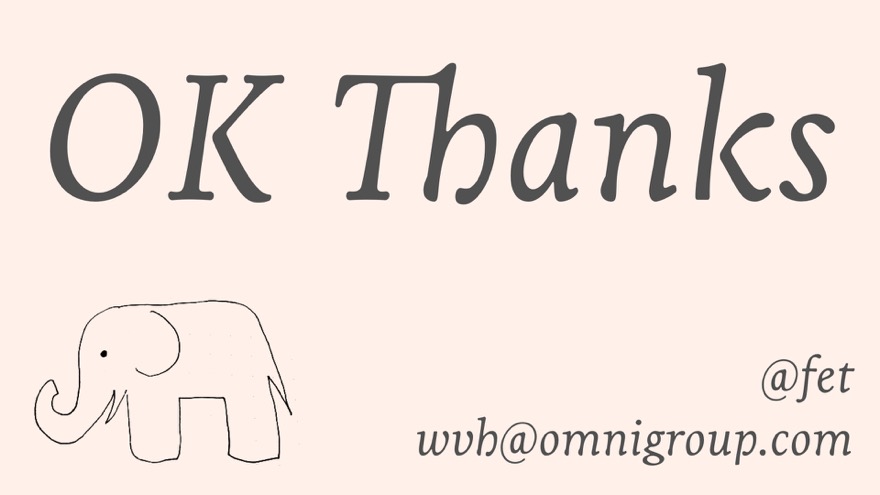
OK thanks! I drew you an elephant.
Cue up 呼び声 by Clammbon; we’re done!